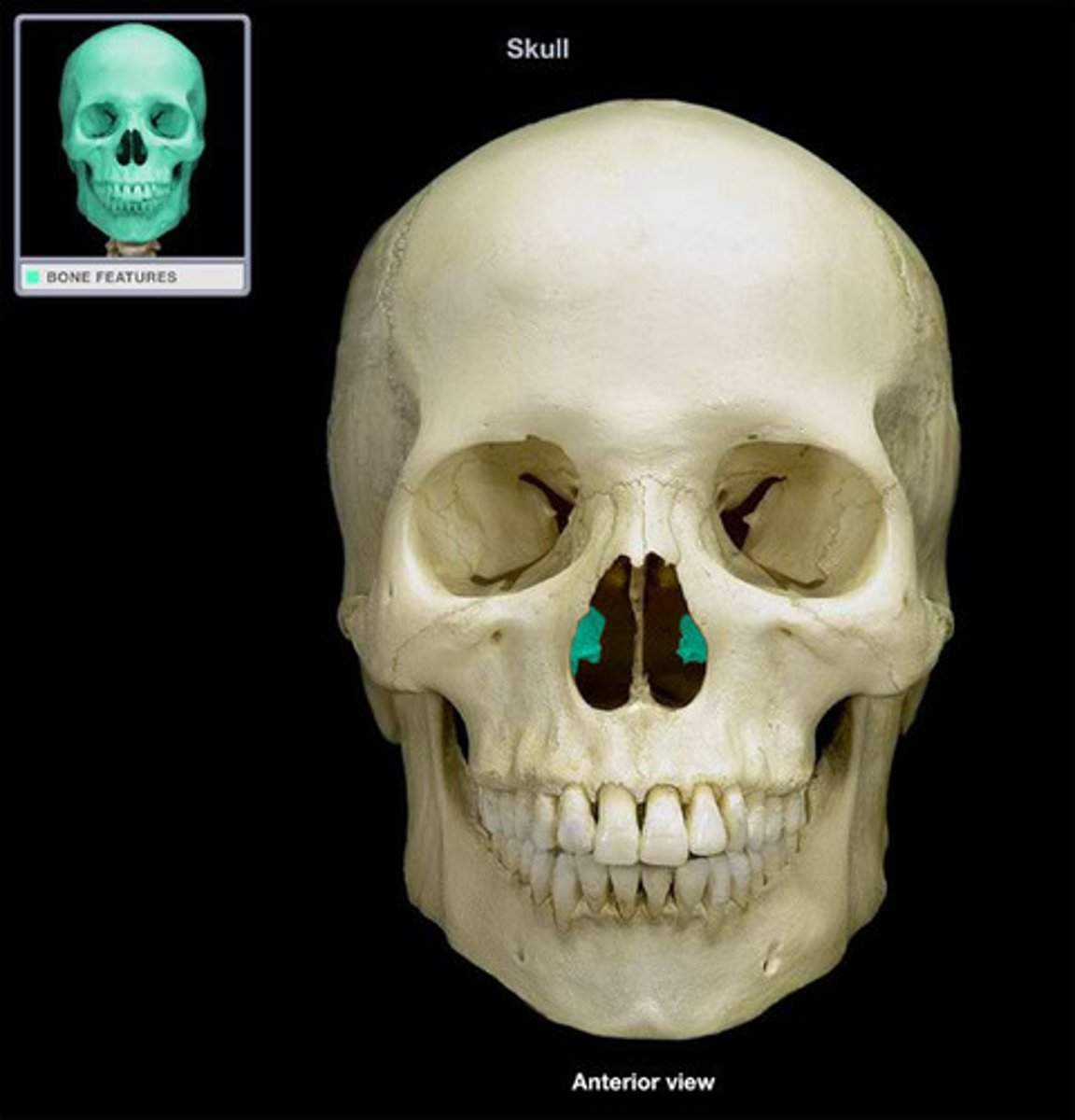RA I - Bones of the Cranium and Face
1/48
There's no tags or description
Looks like no tags are added yet.
Name | Mastery | Learn | Test | Matching | Spaced |
|---|
No study sessions yet.
49 Terms
Frontal Bone
Anterior 1/3 of the cranium; The "forehead"; Superior part of eye socket
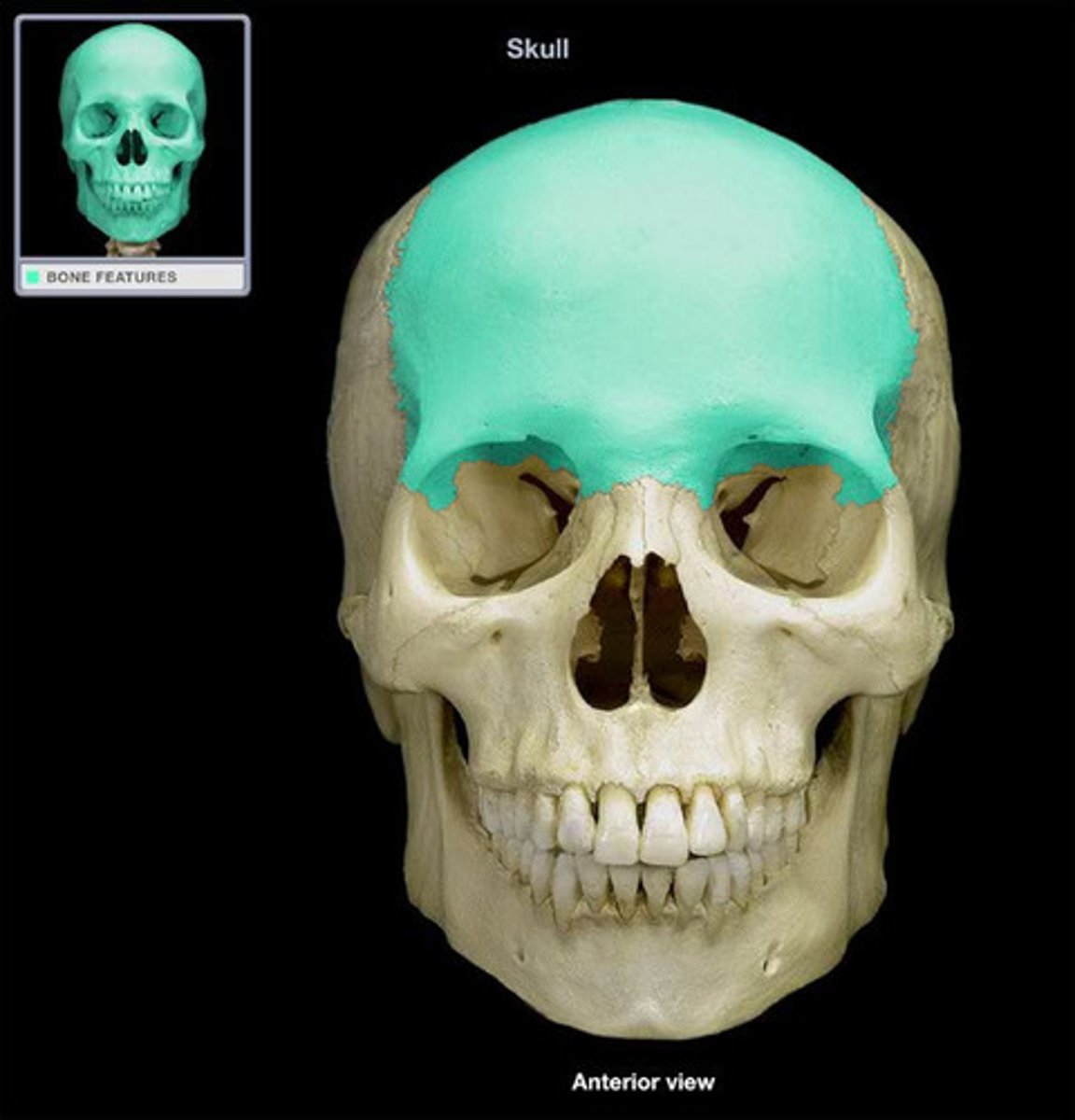
Frontal Eminences
Rounded eminences on either side of the median line and a little inferior to the center of the frontal bone
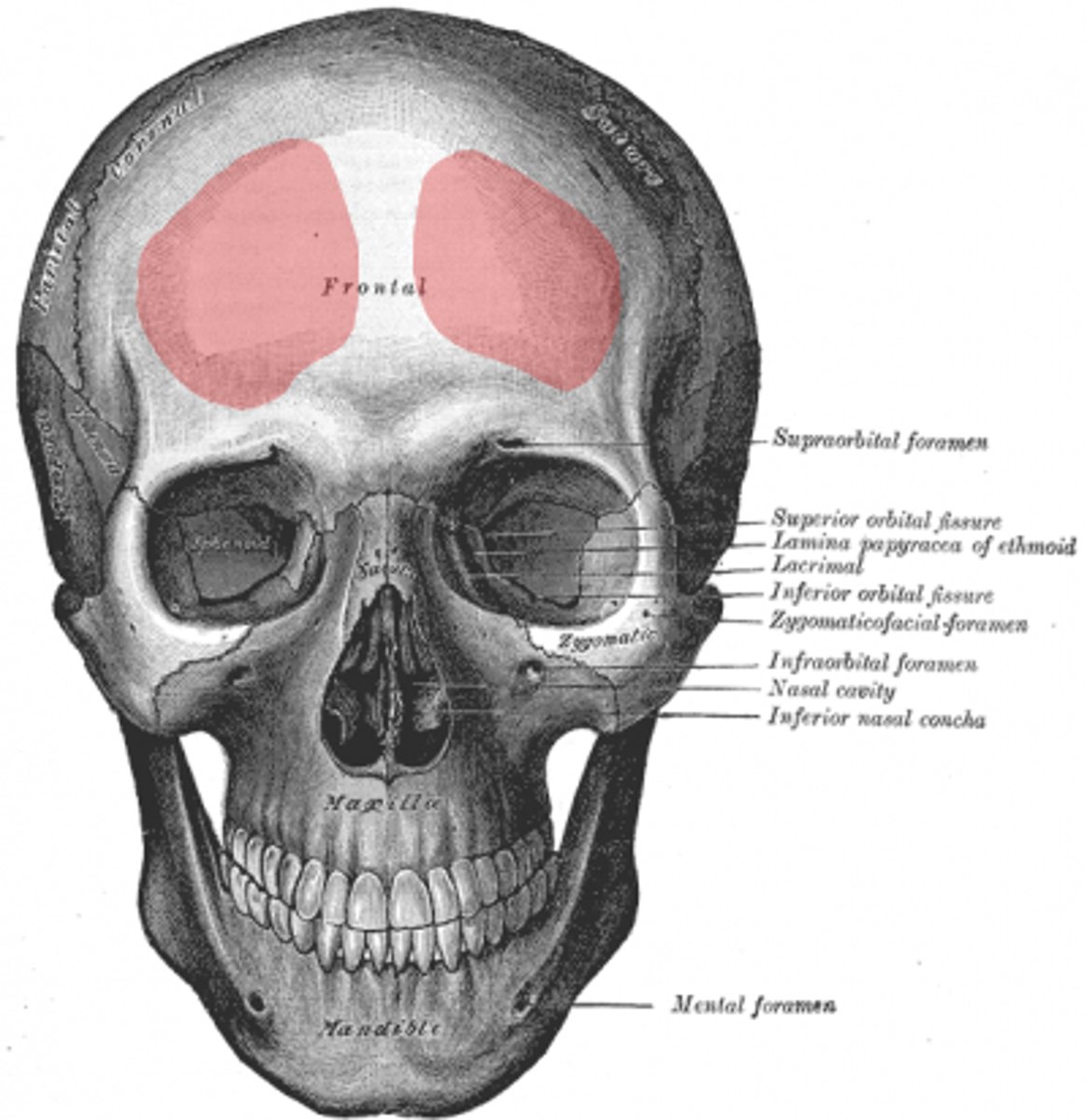
Supraorbital Margin
The superior rim of the eye socket
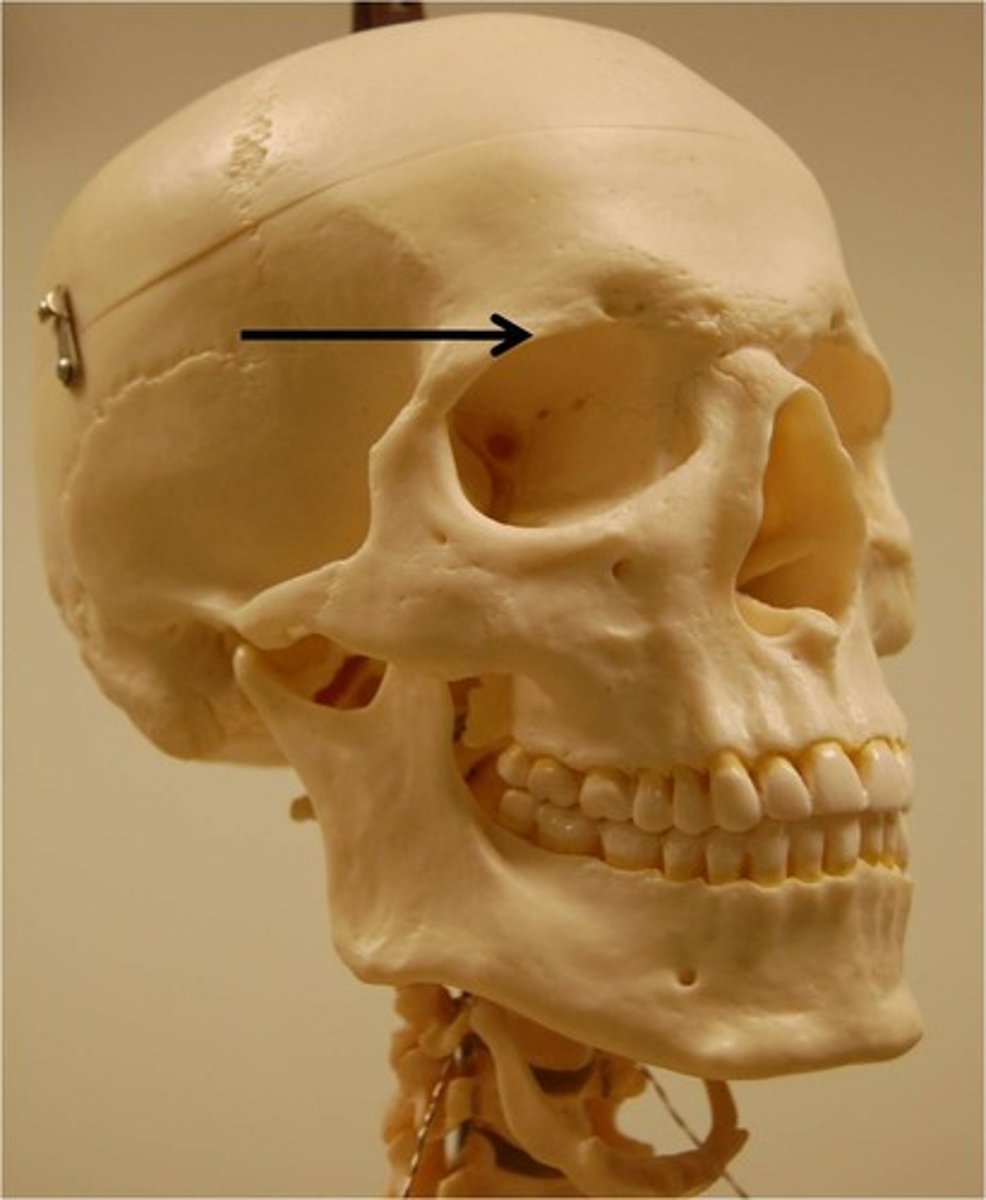
Superciliary Arches
The inferior part of the forehead just superior to the medial ends of the eyebrows.
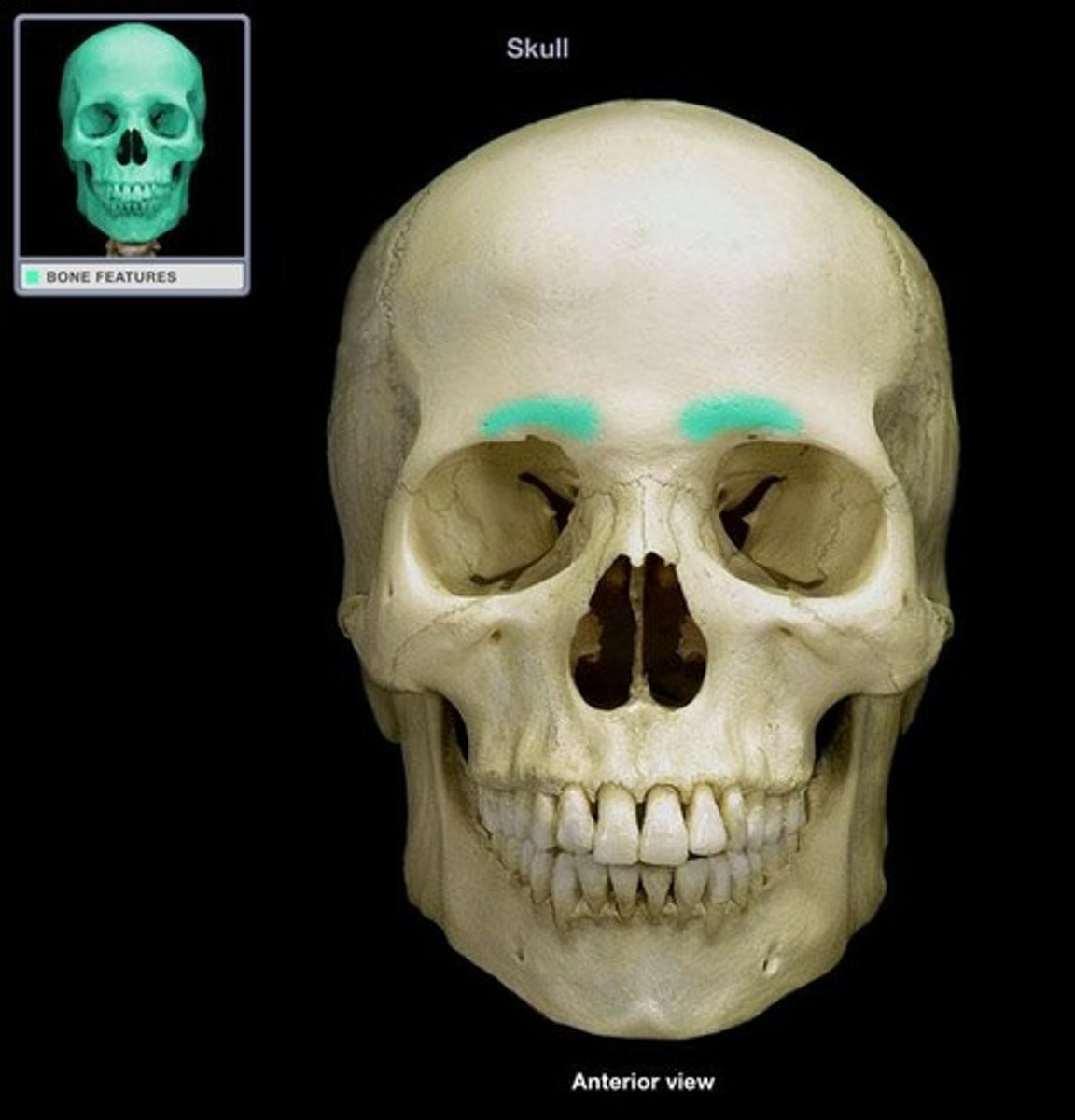
Glabella
An elevation located between the superciliary arches, on the inferior part of the frontal bone; Found immediately above the root of the nose.
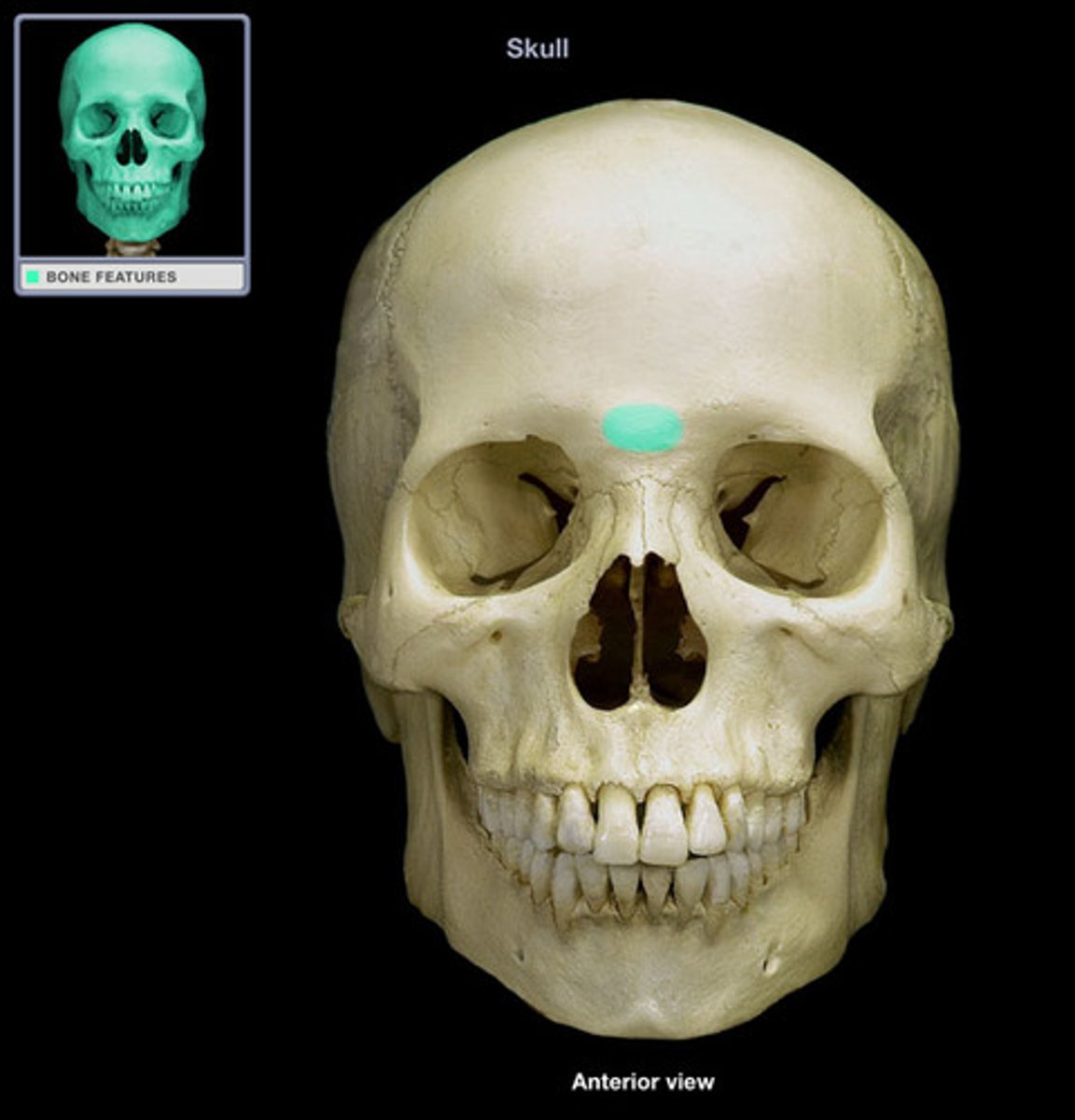
Temporal Bones
Inferior portion of the sides and base of the cranium
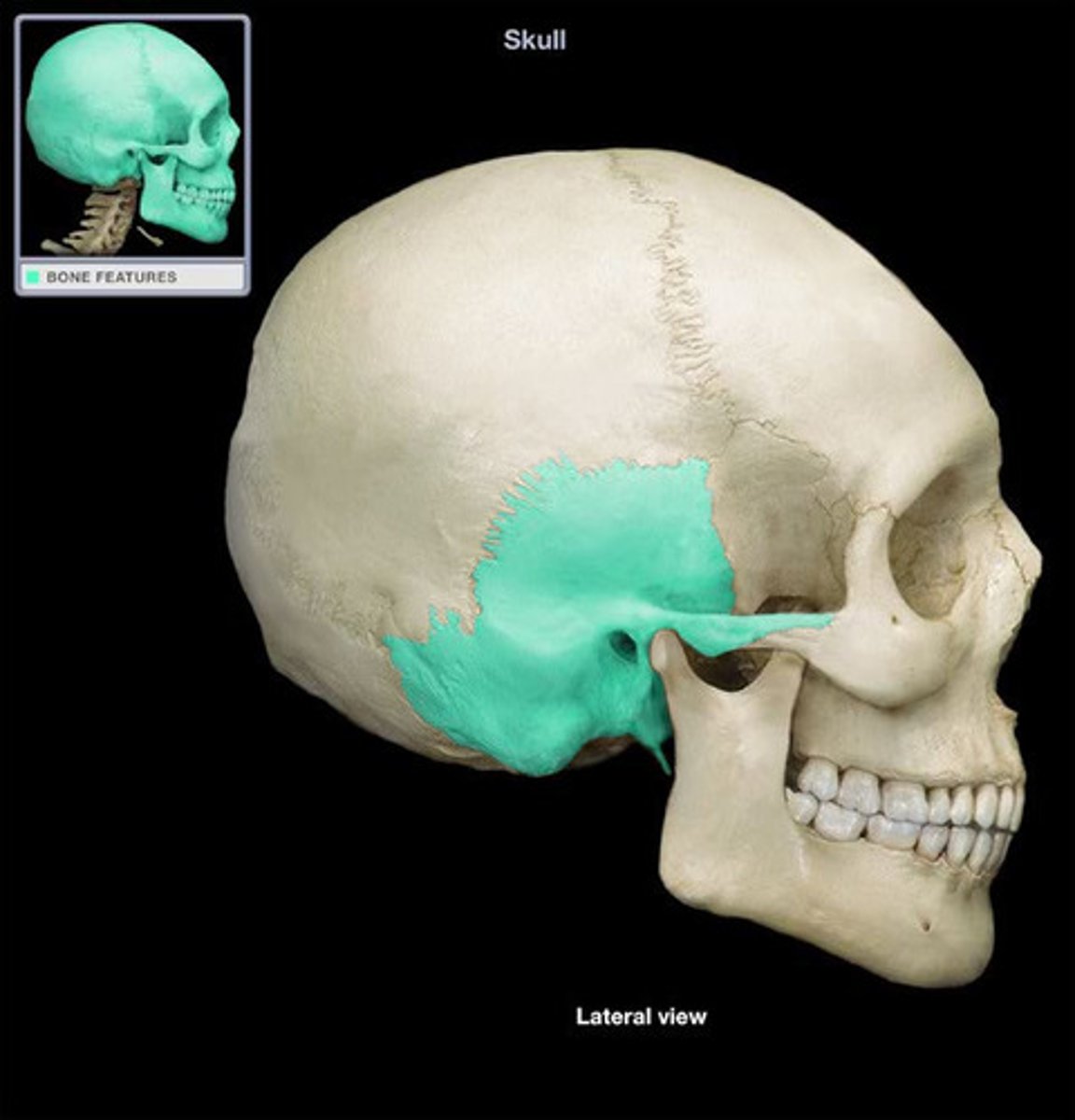
Zygomatic Arch
A long thin, arched process extending anteriorly from the squama to the zygomatic bone; Lies above the external auditory meatus; Divides the length of the ear in half; Makes up the widest part of the face, which is the "bizygomatic width".
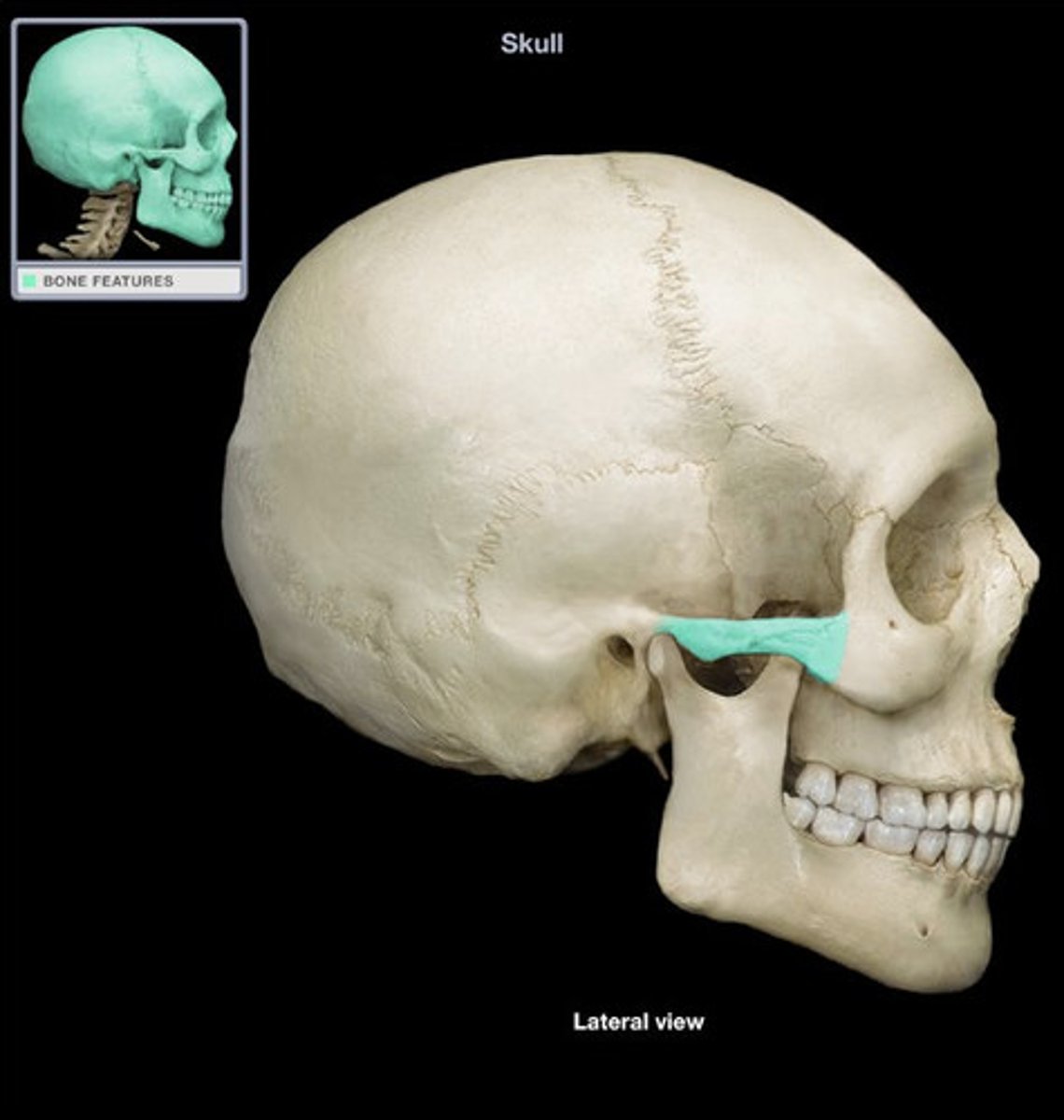
Mandibular Fossa
Small, oval depression or socket on the underside of the temporal bone; Articulates with the condyle of the mandible

External Auditory Meatus
Opening of the ear passage; Located in front of the mastoid process
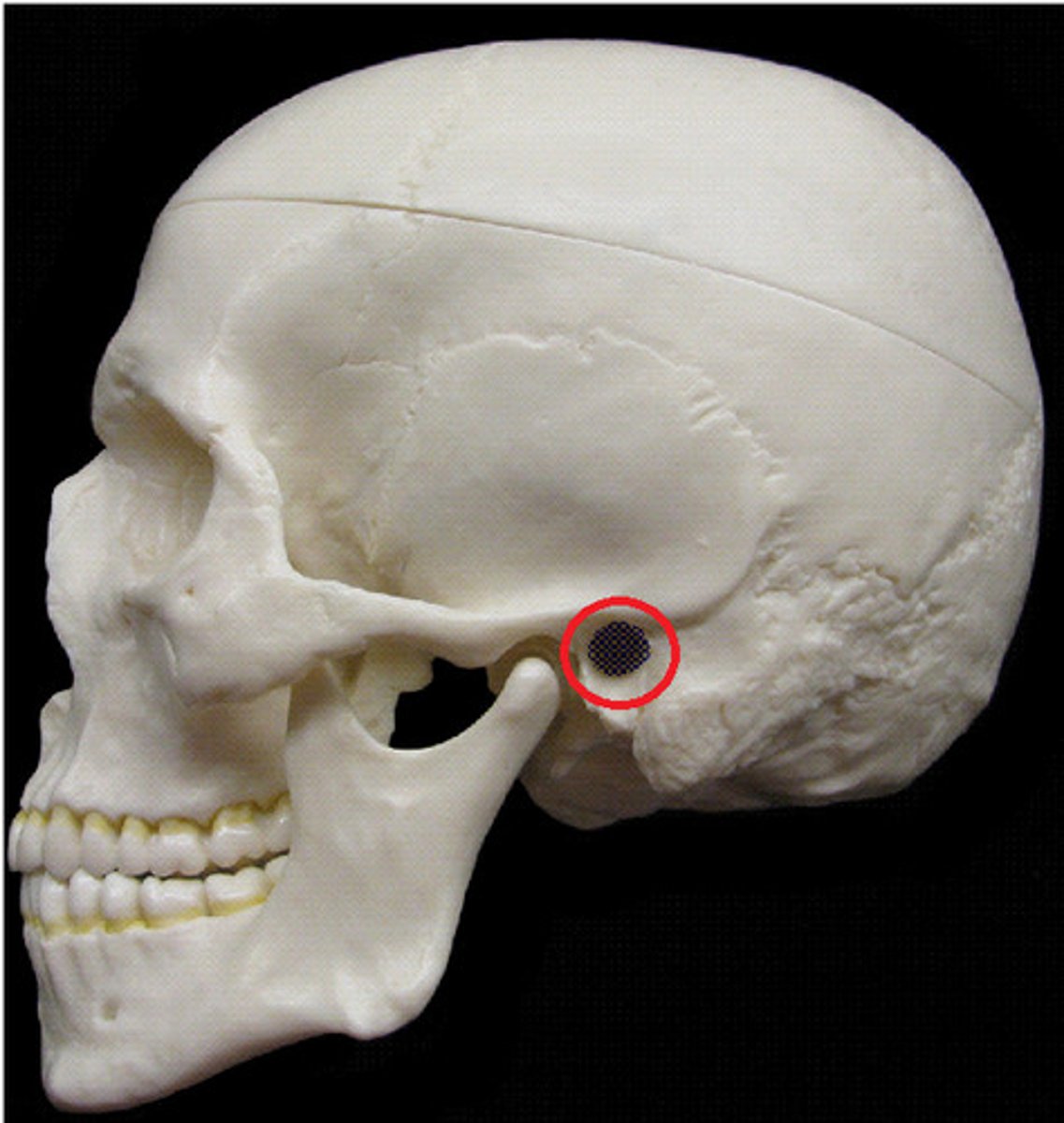
Mastoid Process
Rounded projection of the interior portion of the temporal bone just medial to the lobe of the ear; Attachment site for the SCM muscle

Line of the Temple
Located between the junction of the frontal and temporal bones, it marks the end of the forehead and the beginning of the temporal region; Creates the anterior margin of the temporal cavity; Very "sharp" or prominent on thin or emaciated persons
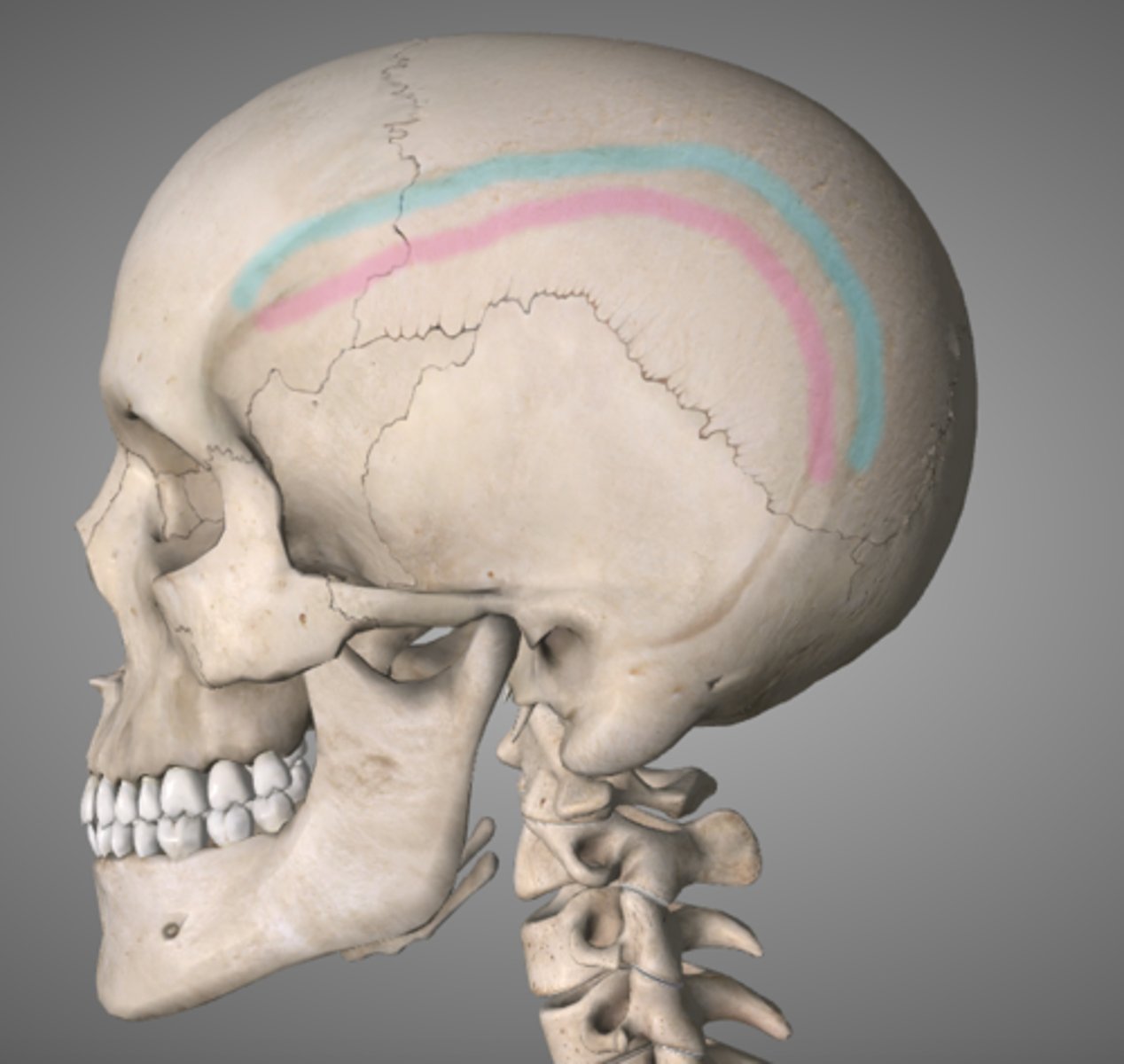
Parietal Bones
Superior portion of the sides and back of the cranium; Posterior 2/3 of the roof of the cranium
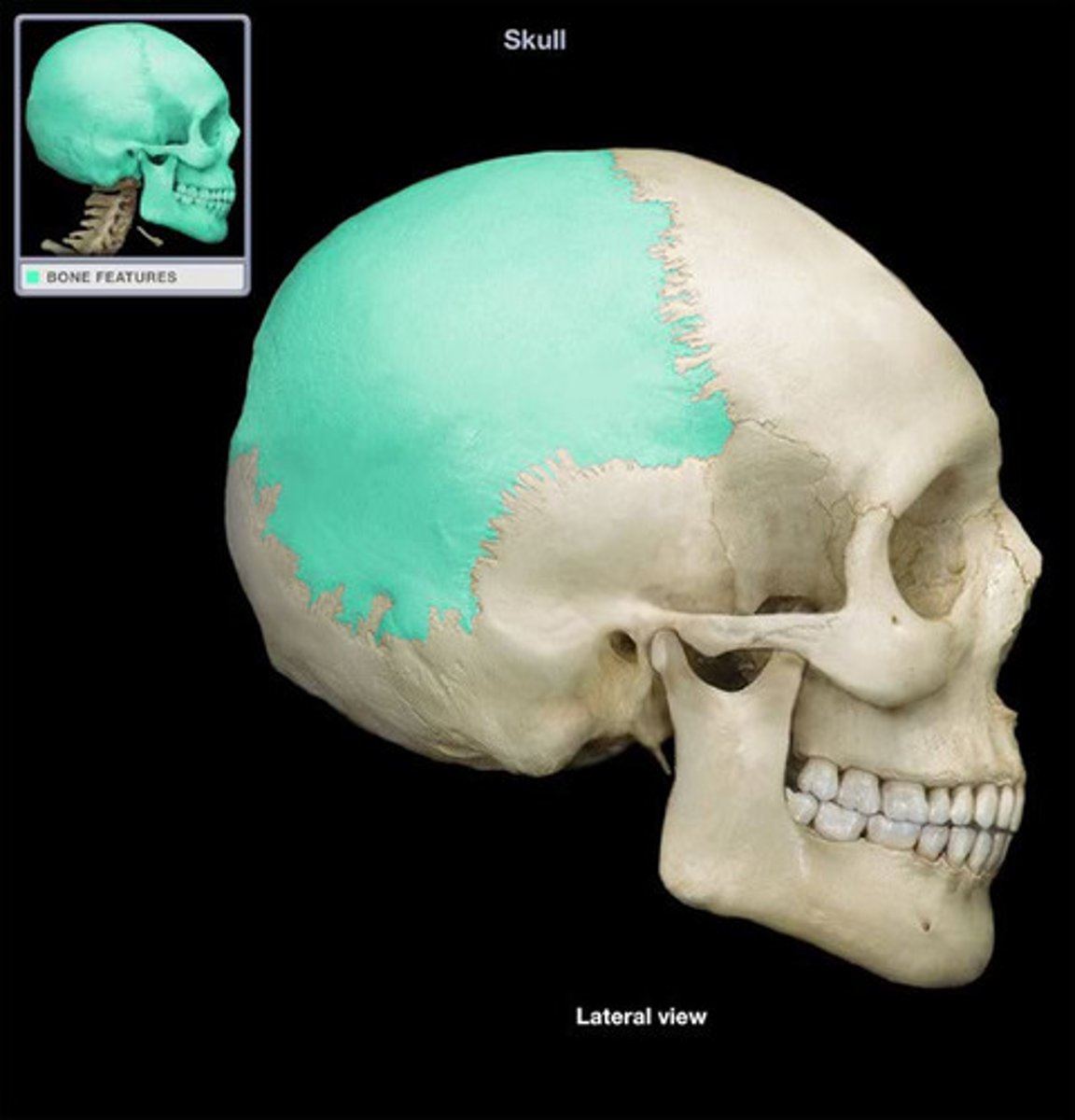
Parietal Eminences
Marked convexities on the outer surface of the parietal bones; The widest part of the cranium, which is called the "biparietal width".
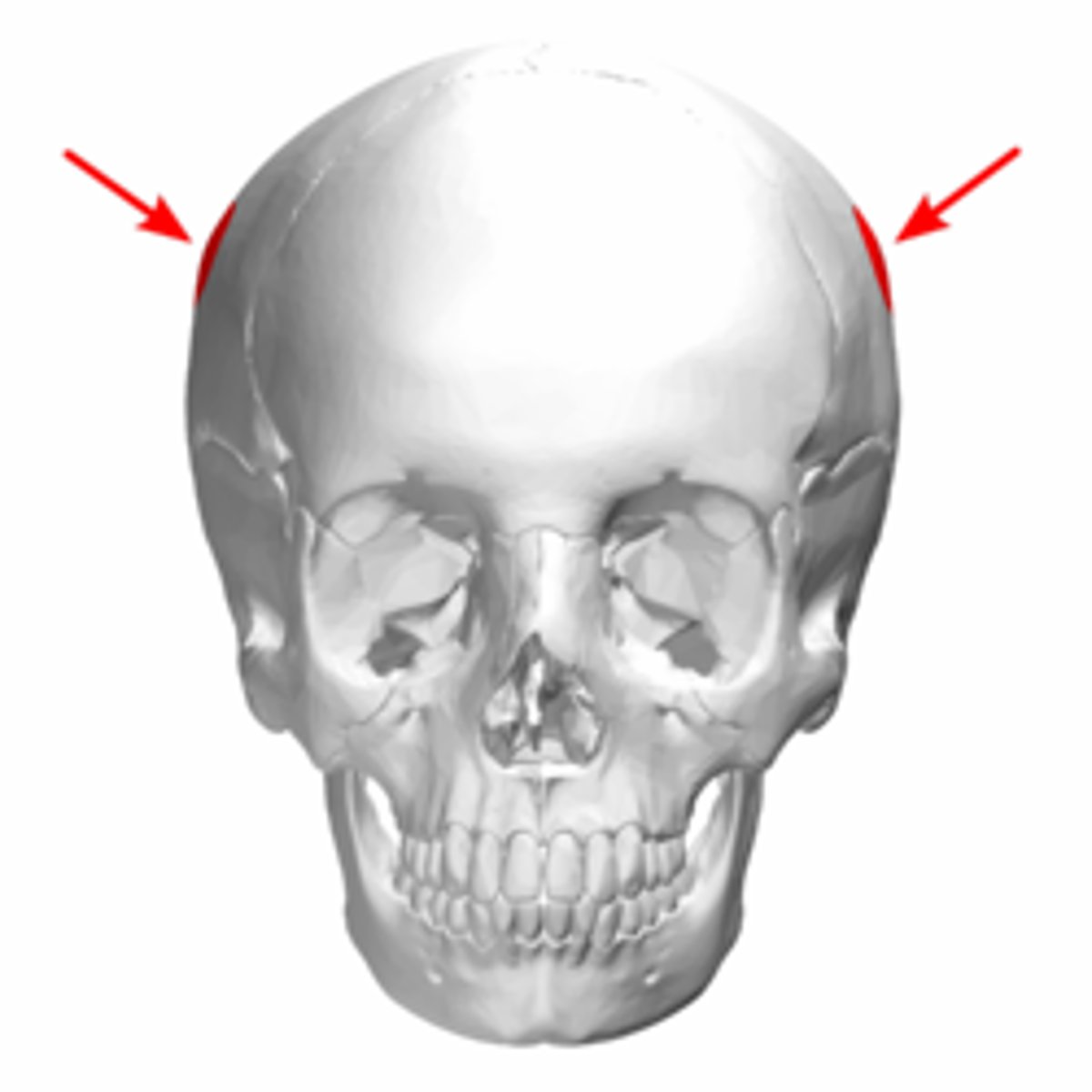
Vertex
The highest part of the cranium
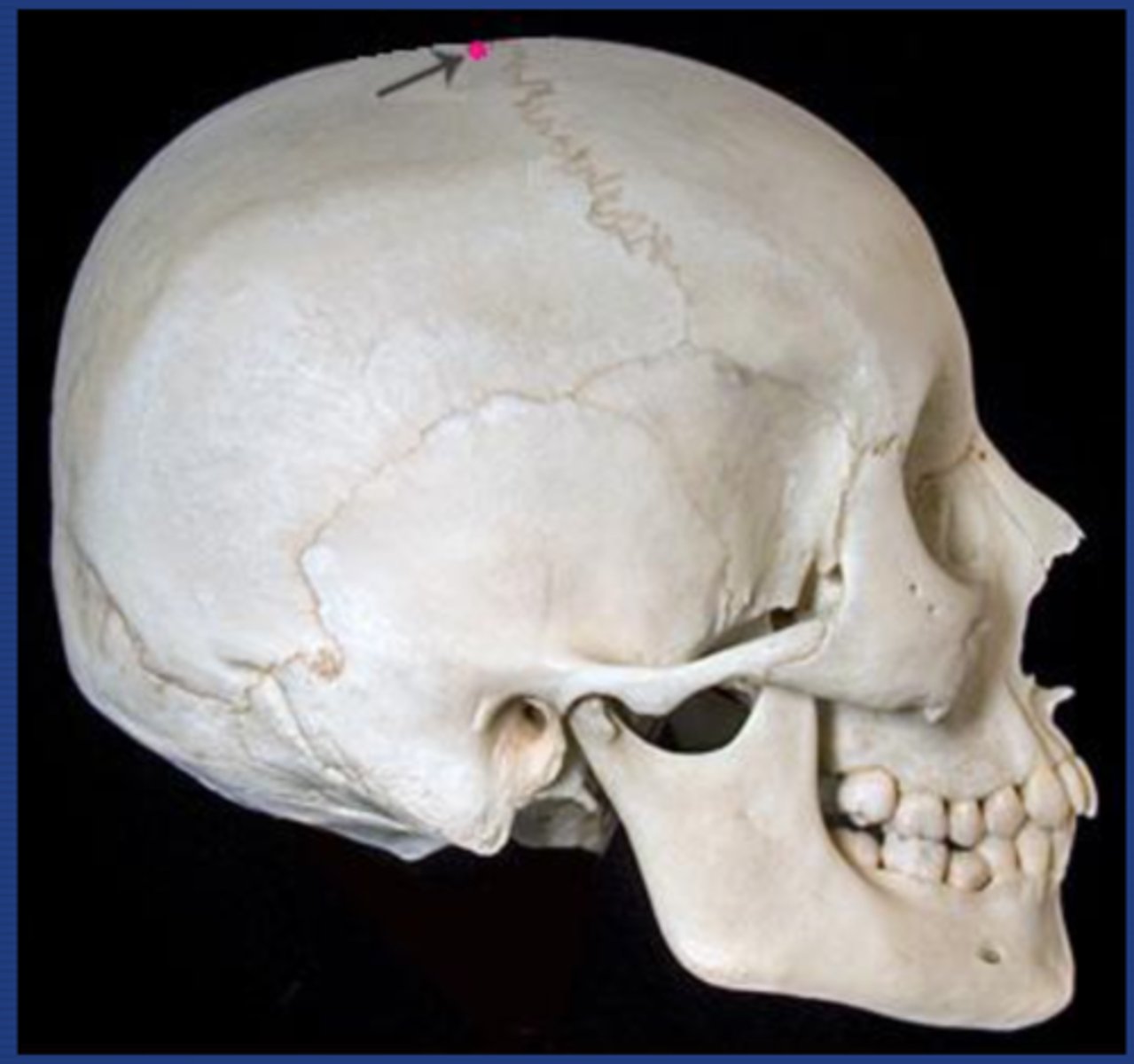
Crown
The top of the crown, which is delineated by connecting four points together. The four points are the two frontal eminences and the two parietal eminences.

Occipital Bone
Lowest part of the back and base of the cranium; "Cradles" the brain
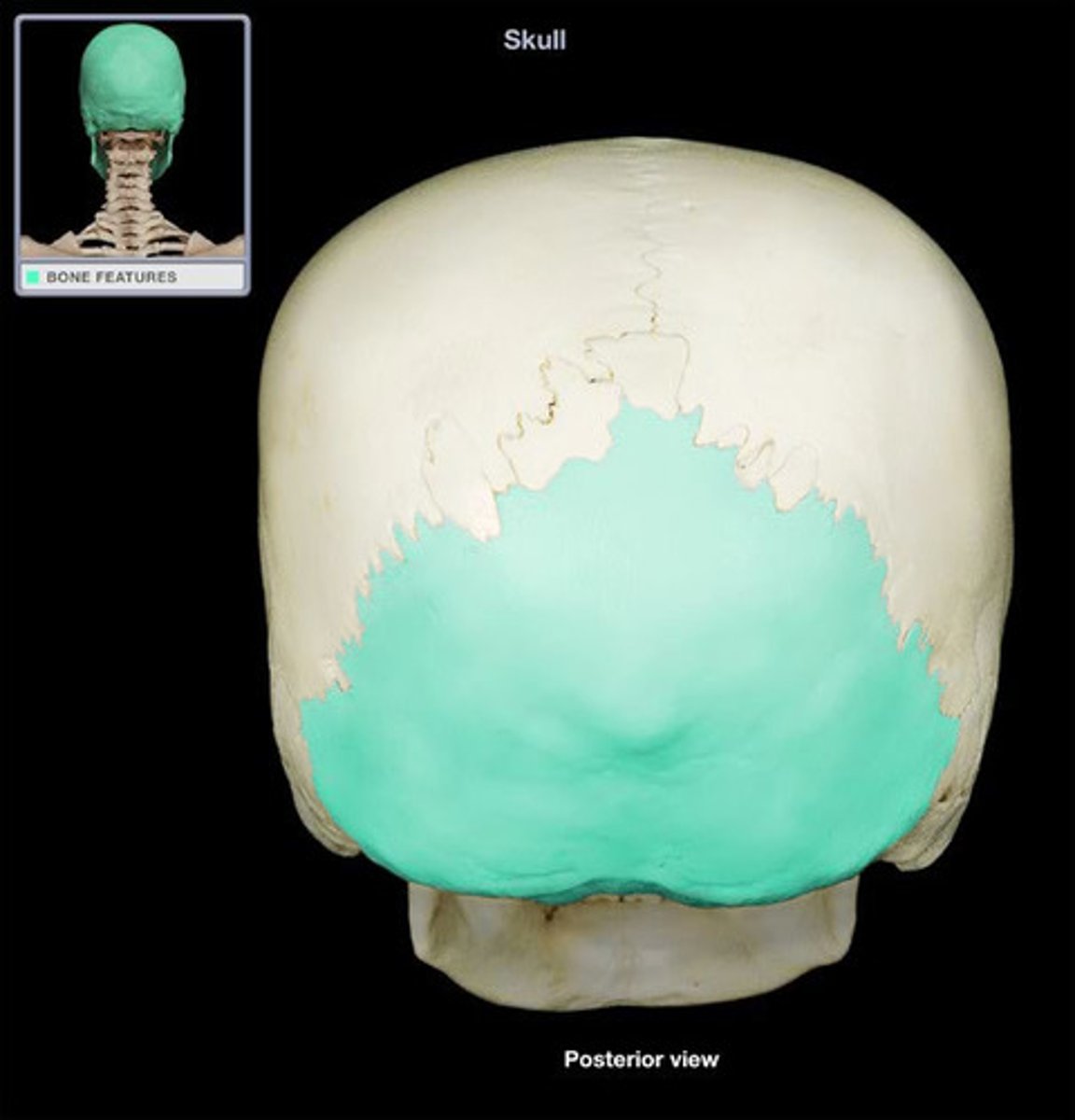
Foramen Magnum
An opening through which the spinal cord, spinal arteries and nerves pass; Located midway between the two mastoid processes; Important for securing the head to the body when decapitation has occurred.

Sphenoid
At the anterior part of the base of the skull, binding the other cranial bones together
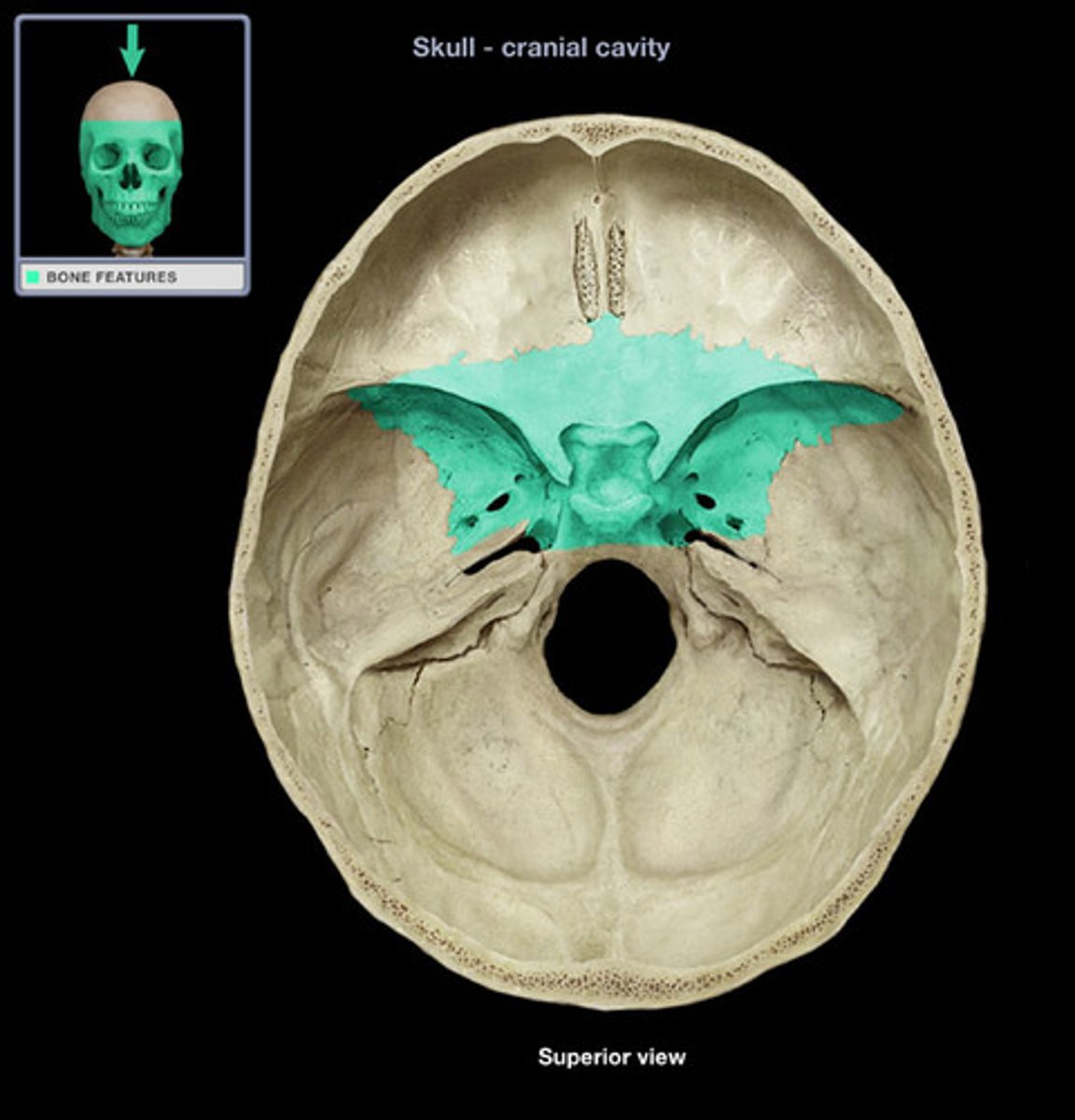
Ethmoid
Forms the roof of the nasal cavity, which closes the anterior part of the base of the cranium

Cranial Sutures
Fibrous bands of tissue that connect the bones of the skull

Fontanels
The spaces between the cranial bones called "soft-spots"

Coronal Suture
Articulation between the parietal and frontal bones.
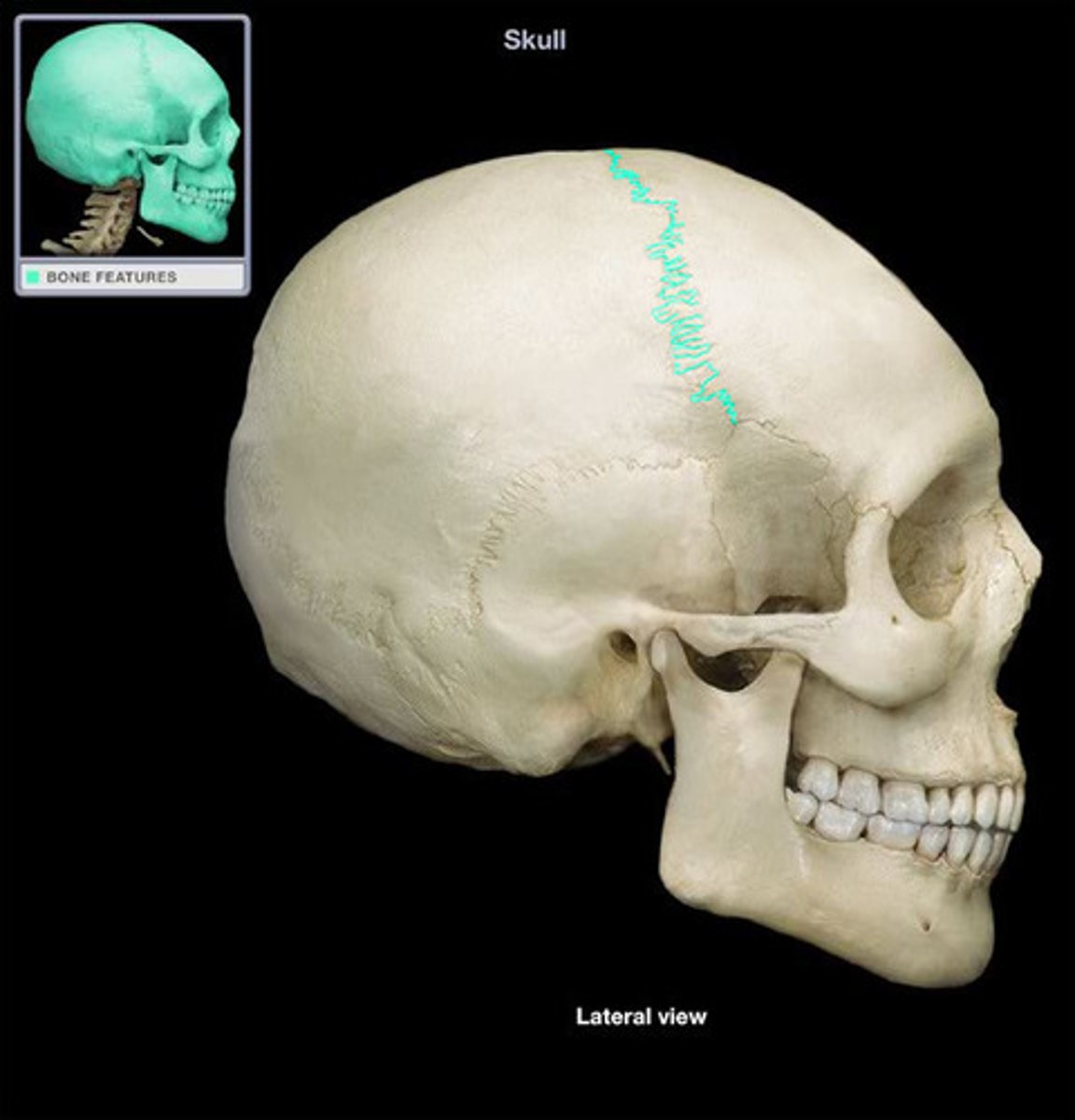
Squamous Suture
Articulation between the temporal and the parietal bones
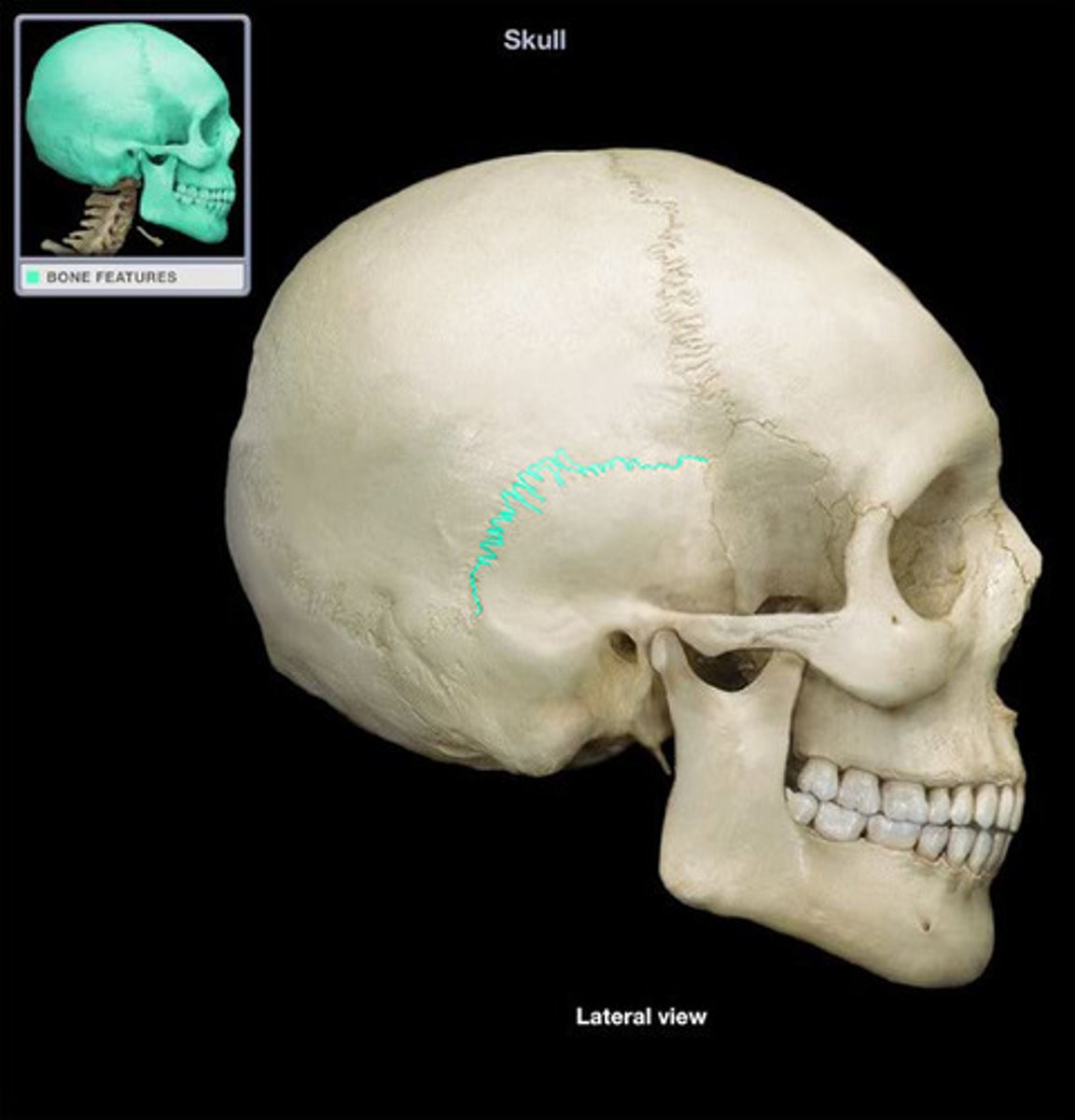
Lambdoid Suture
Articulation between the parietal bones and the occipital bone
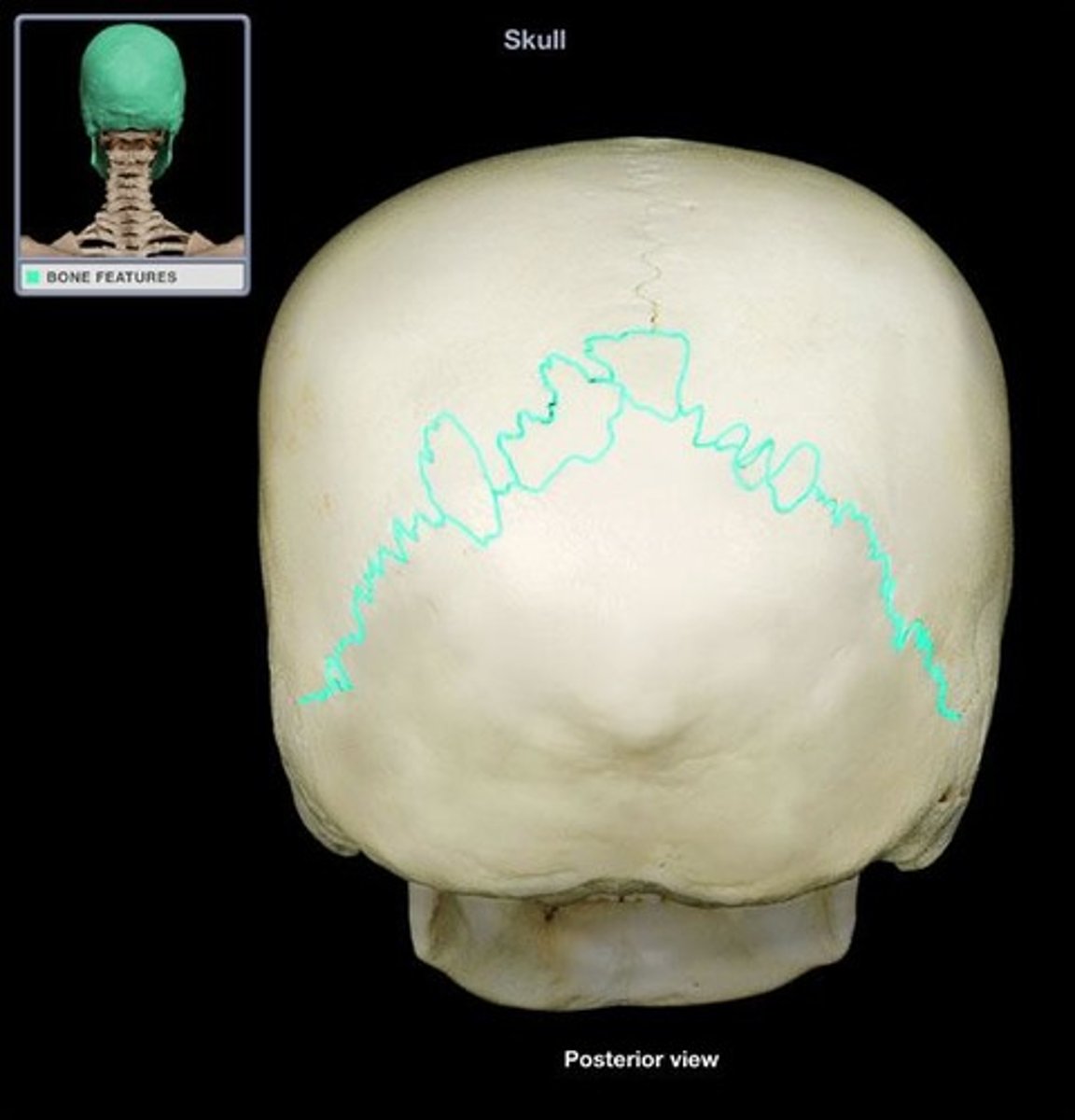
Occipitomastoid Suture
Articulation between the occipital bone and the mastoid process of the temporal bone.

Sagittal Suture
At the very top of the cranium; Articulation between the parietal bones.
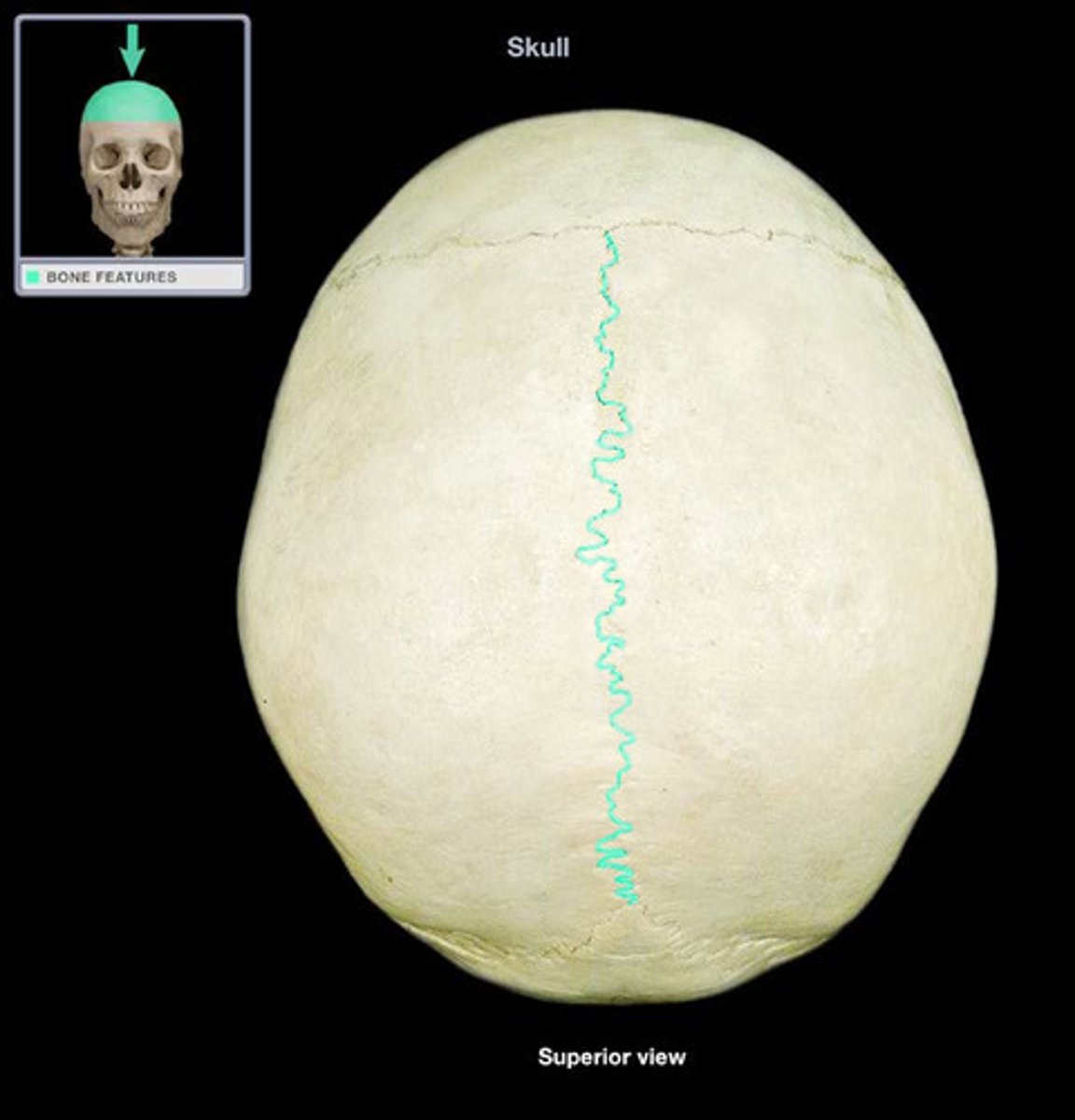
Nasal Bones
Lie directly inferior to the Glabella; Forms the bridge of the nose, which is the dome over the superior portion of the nasal cavity
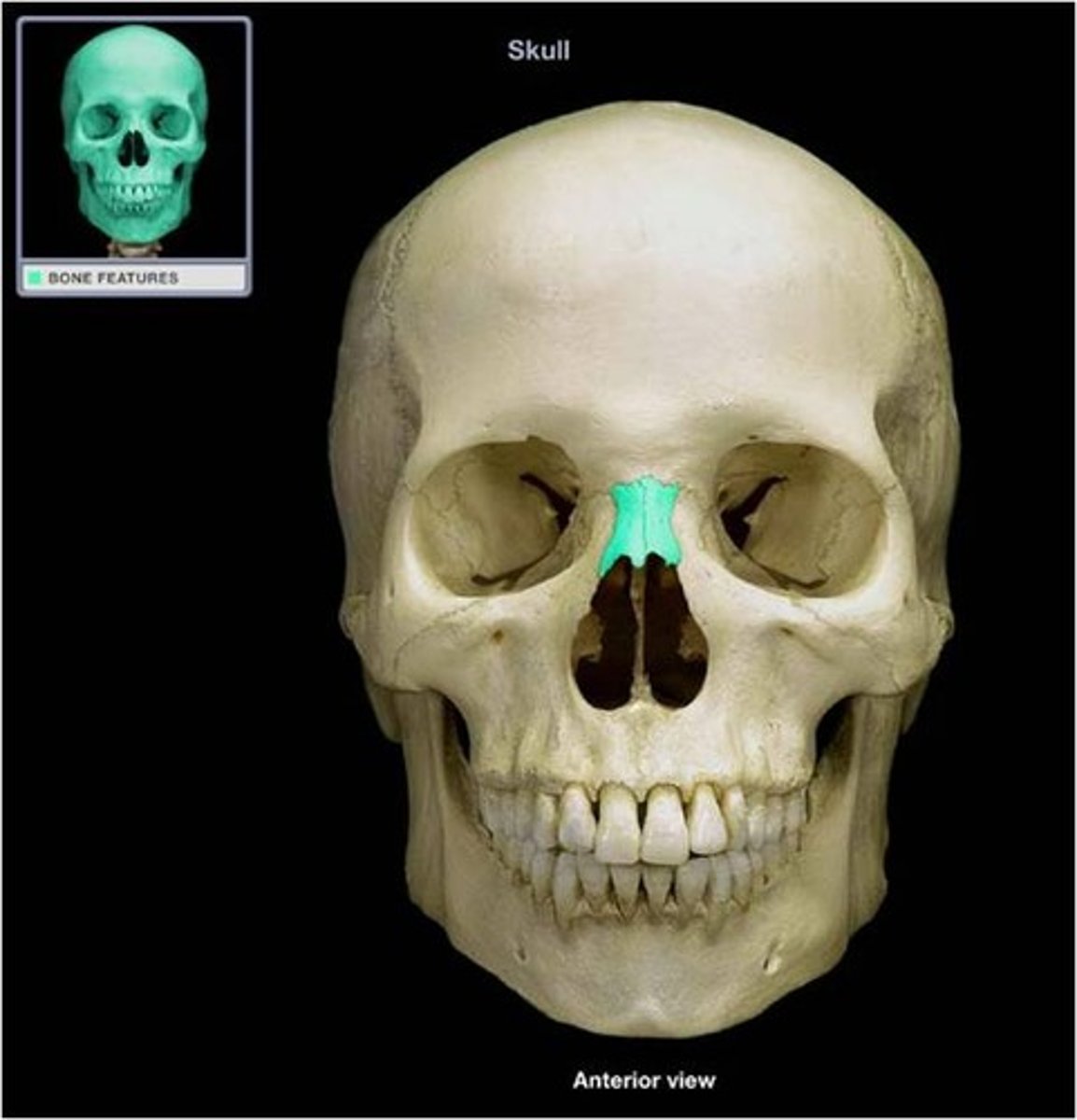
Nasal Cavity
Orifice in the skull bound by margins of the nasal and maxilla bones. The space, when filled, is separated by cartilage, which makes up a small part of the septum
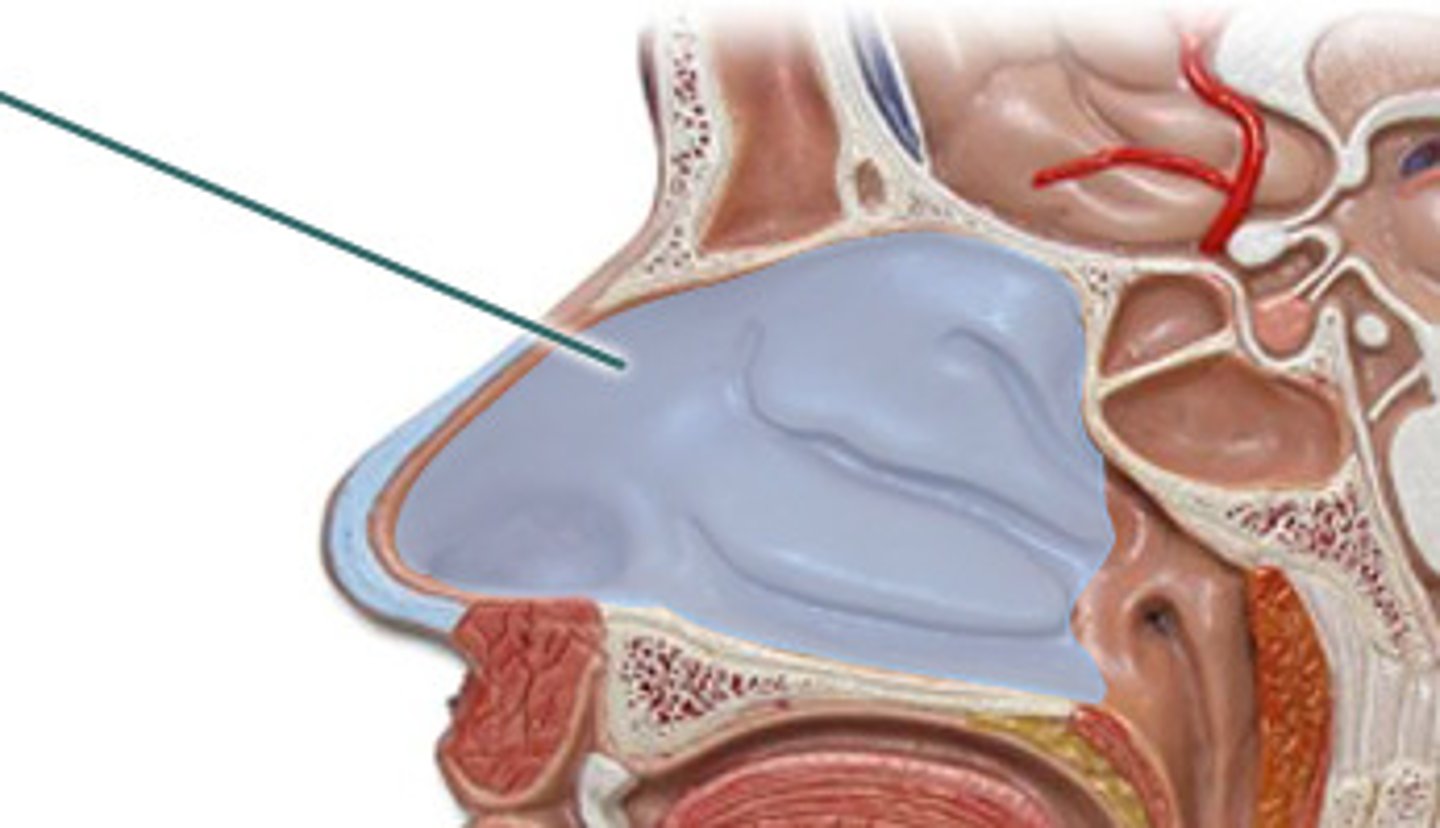
Zygomatic Bones
Diamond shaped bones forming the cheekbones Located on frontal and lateral planes of the face; Forms part of the inferior and lateral surfaces of the orbital cavity
Midpoint to Midpoint
Measure the widest part of the anterior plane of the face; Significant to RA in that it indicates the area for rouge cosmetic placement.

Maxilla
Bones of the upper jaw; Skeletal base for most of the superior portion of the face, anterior roof of the mouth, sides and floor of the nasal cavity and the floor of the orbits.
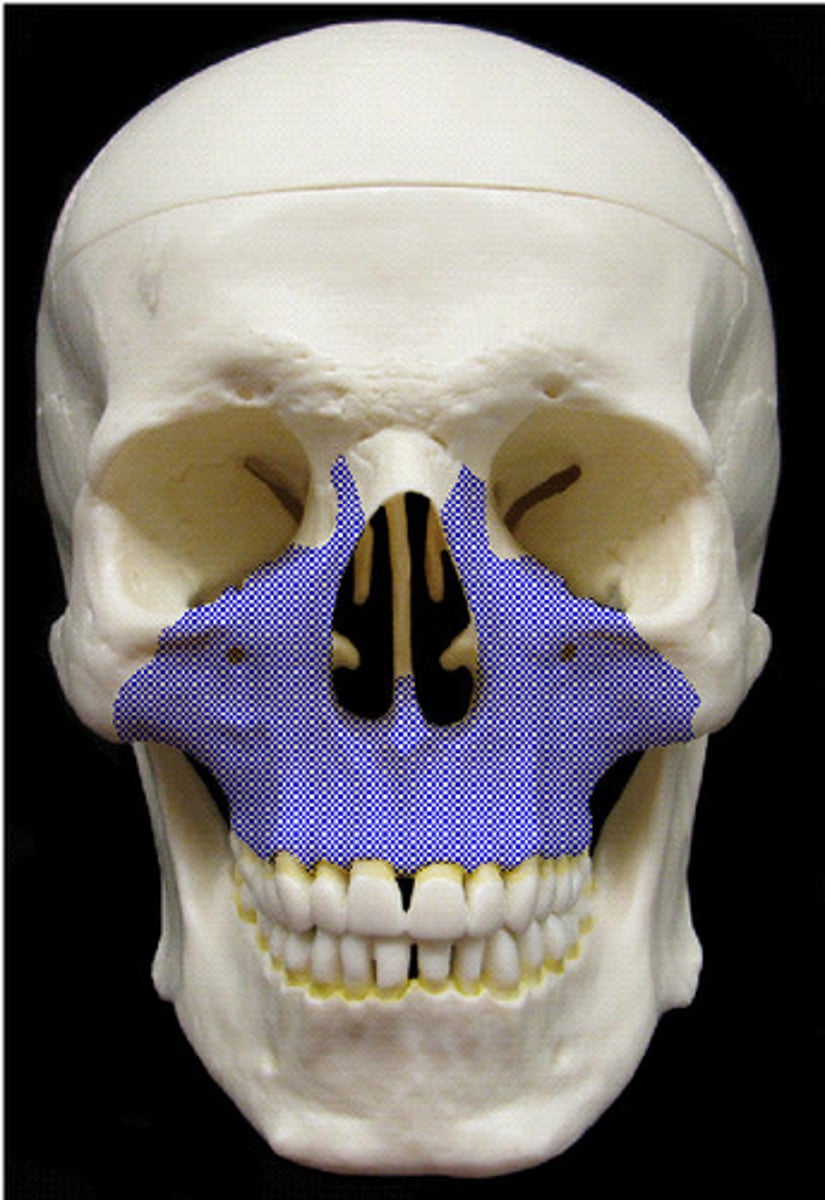
Frontal Process
The ascending part of the upper jaw; Gradually protrudes as it rises superiorly and anteriorly beside the nasal bone to articulate with the frontal bone; Influences the lateral wall of the nose; Causes the most anterior part of the cheek to be located below the inner end of the eye, inferior to the inner canthus.
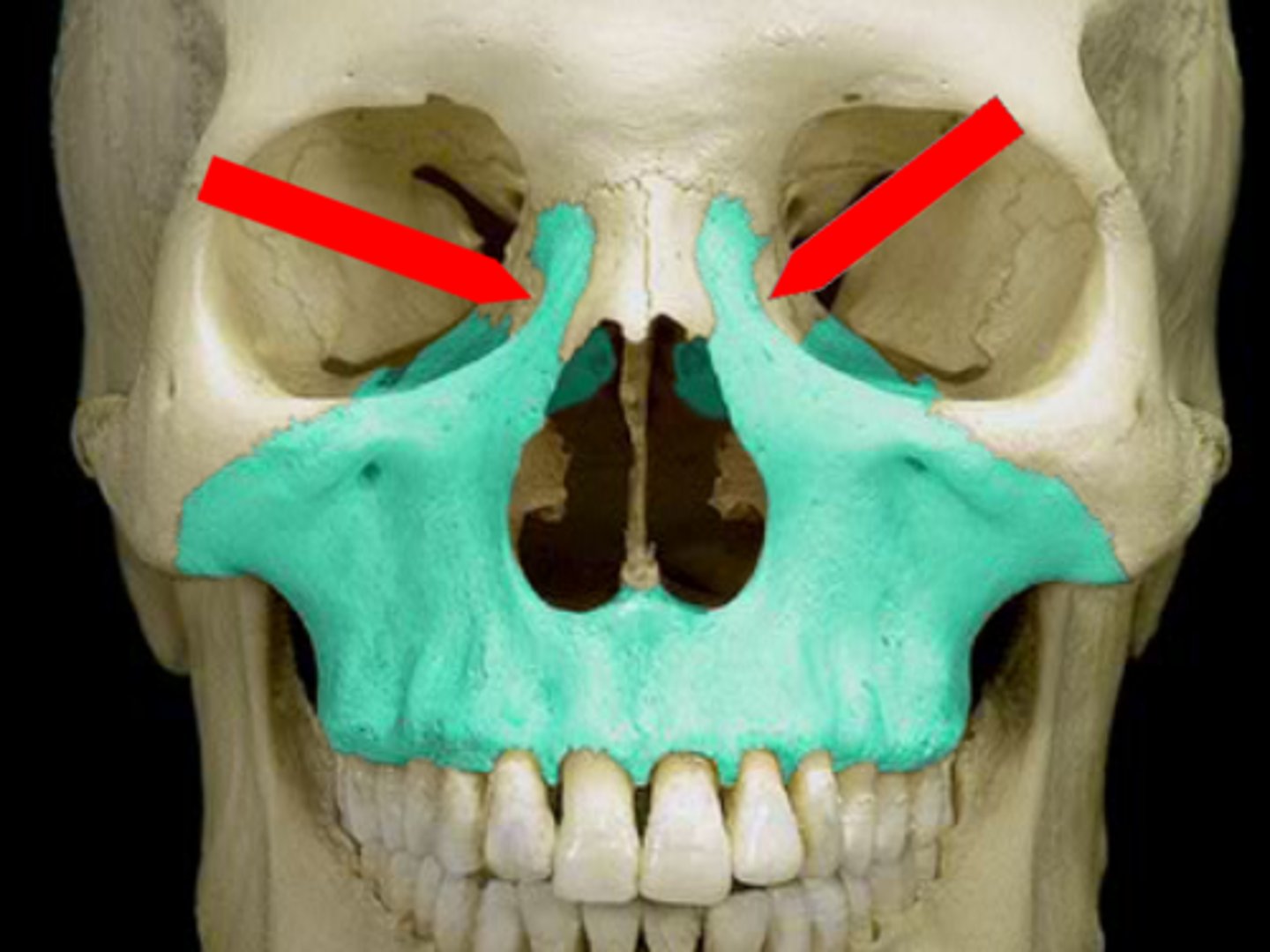
Alveolar Process (Maxilla)
The ridge of thick spongy bone surrounding the alveoli of the teeth; Bilaterally, the alveolar processes form the Alveolar Arch, which mimics the curvature of a horse-shoe, being narrower at the front and wider at the back; Physiognomically, the mouth repeats the horse-shoe shaped curvature; An alveolar prognathism can occur within these processes.

Palatine Process
Forms the anterior part of the hard palate of the mouth, part of the nasal cavity and part of the orbital cavity; Forms greater part of roof of mouth and floor of nasal cavity; Not a surface bone yet influences surface form by duplicating the horse-shoe curvature of the maxilla bones.
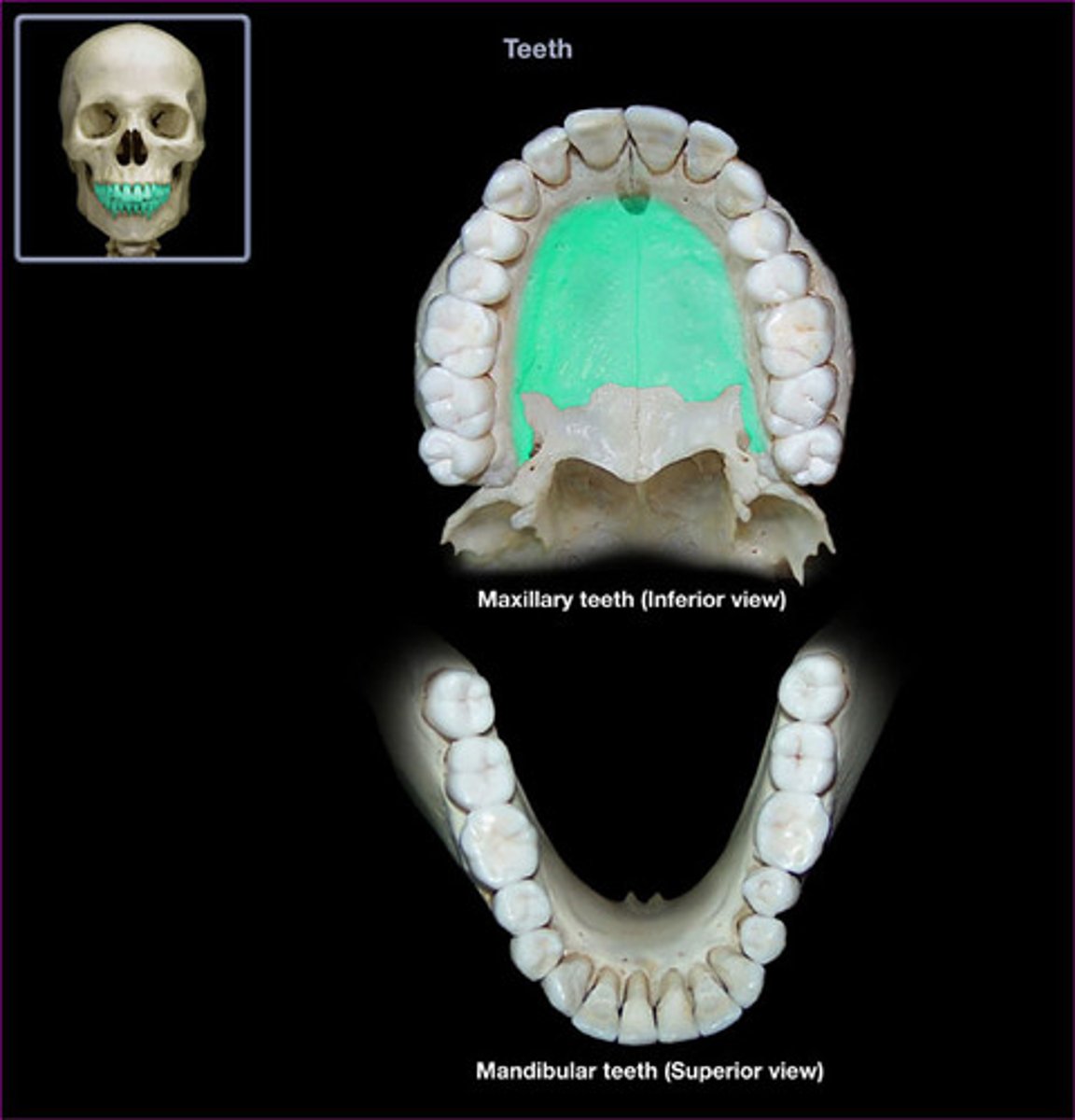
Zygomatic Process
Where the temporal bone joins the zygomatic bone; Physiognomically, it provides the direction of the anterior natural concavity of the cheek
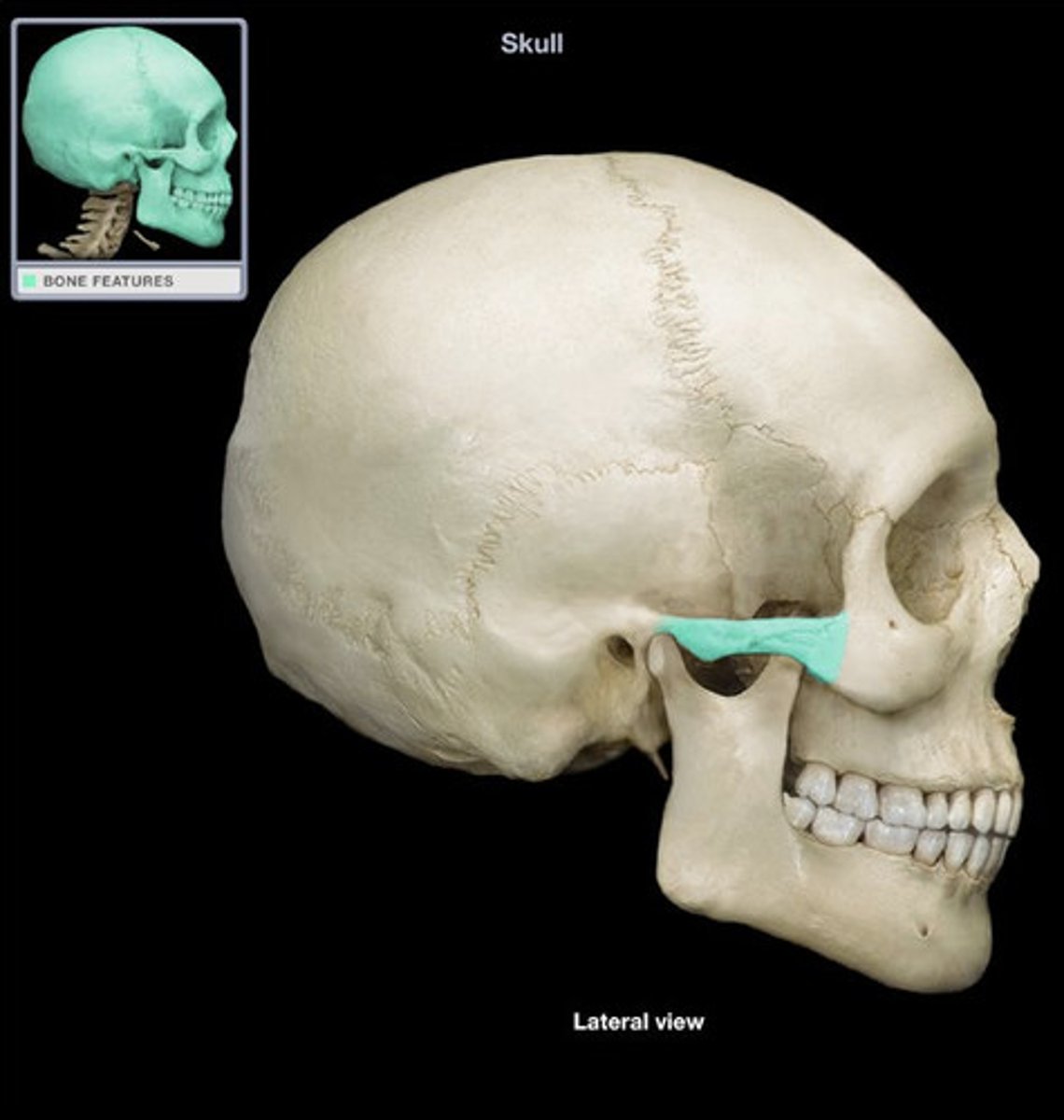
Dental Prognathism/Nasal Spine
A small, sharp bony process that occurs where the two maxilla bones join at the inferior margin of the nasal cavity.
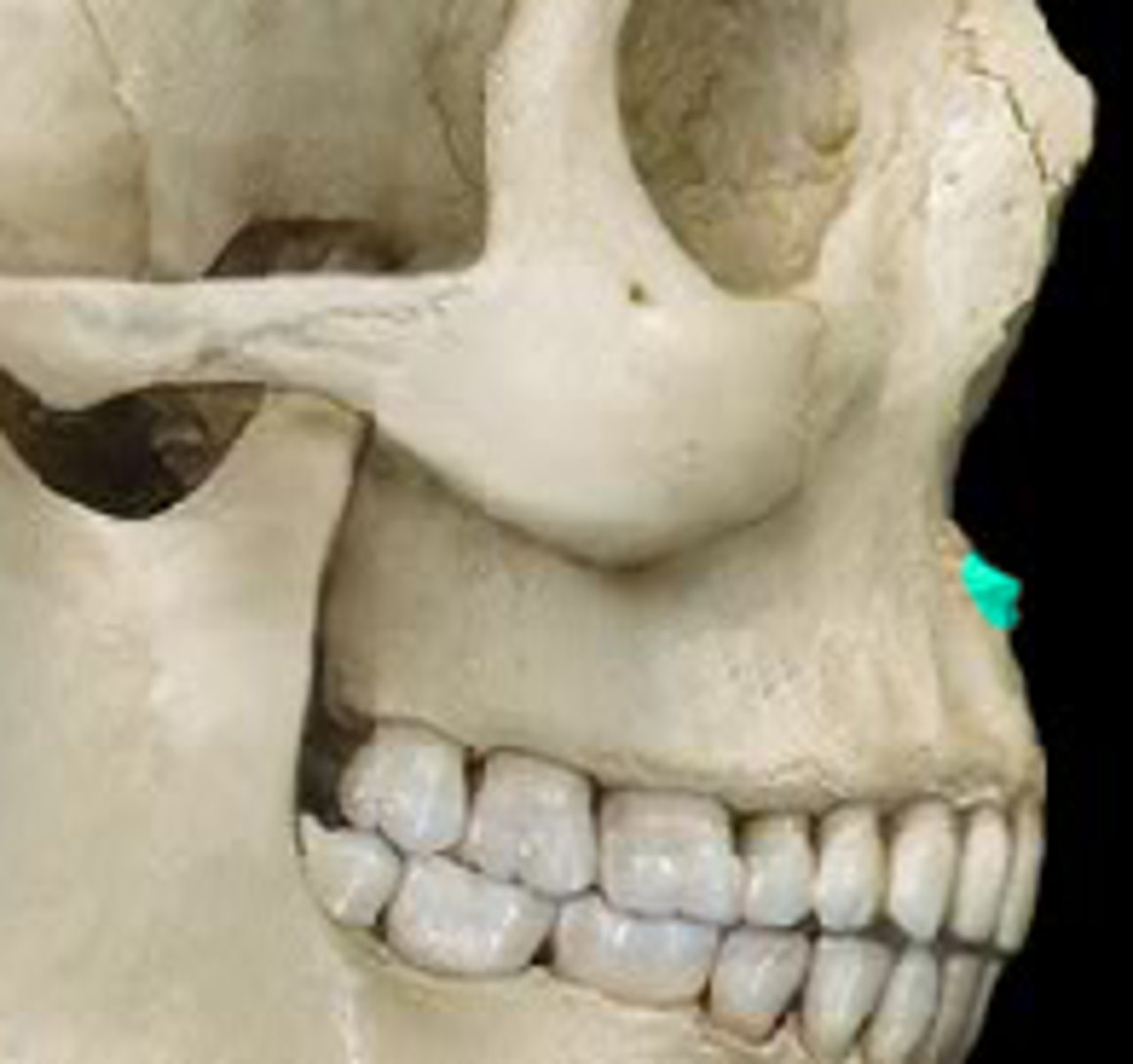
Mandible
Horse-shoe shaped bone which forms the lowest part of the lower jaw
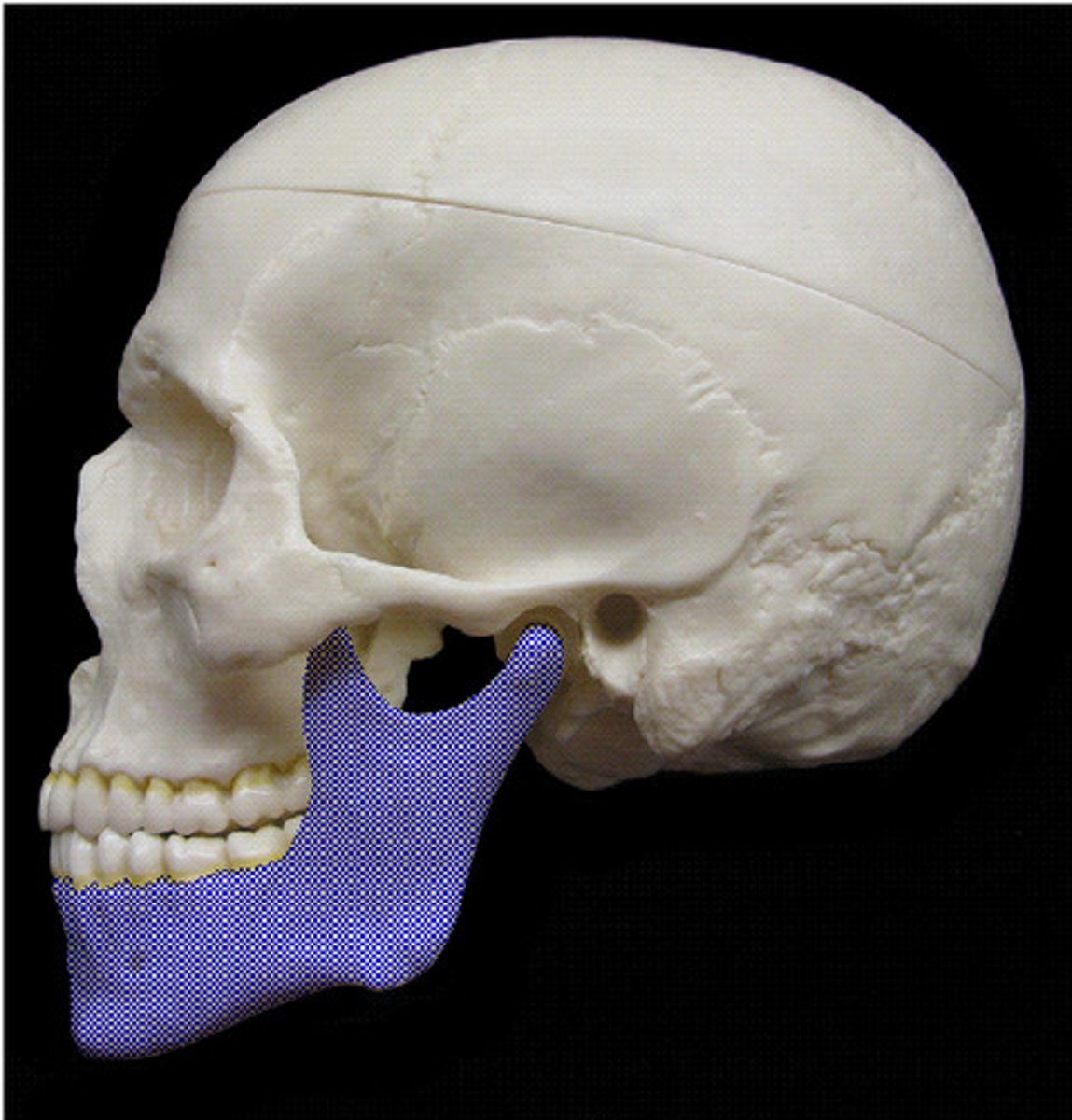
Body of the Mandible
Horizontal portion of the mandible. It is curved and the lowest part of the jaw.
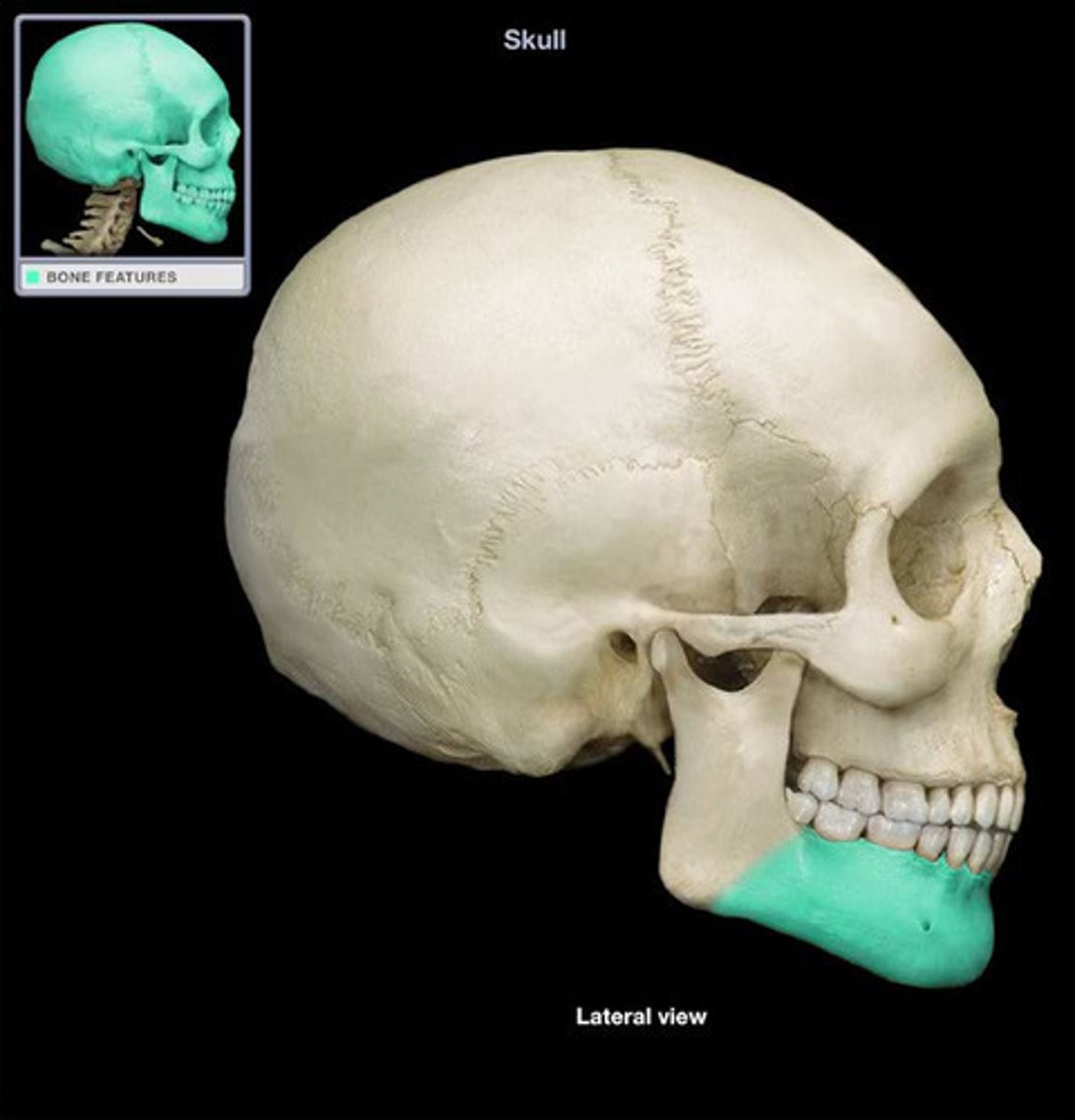
Ramus
Vertical portion of the mandible. It is wide, flat and quadrilateral in shape.
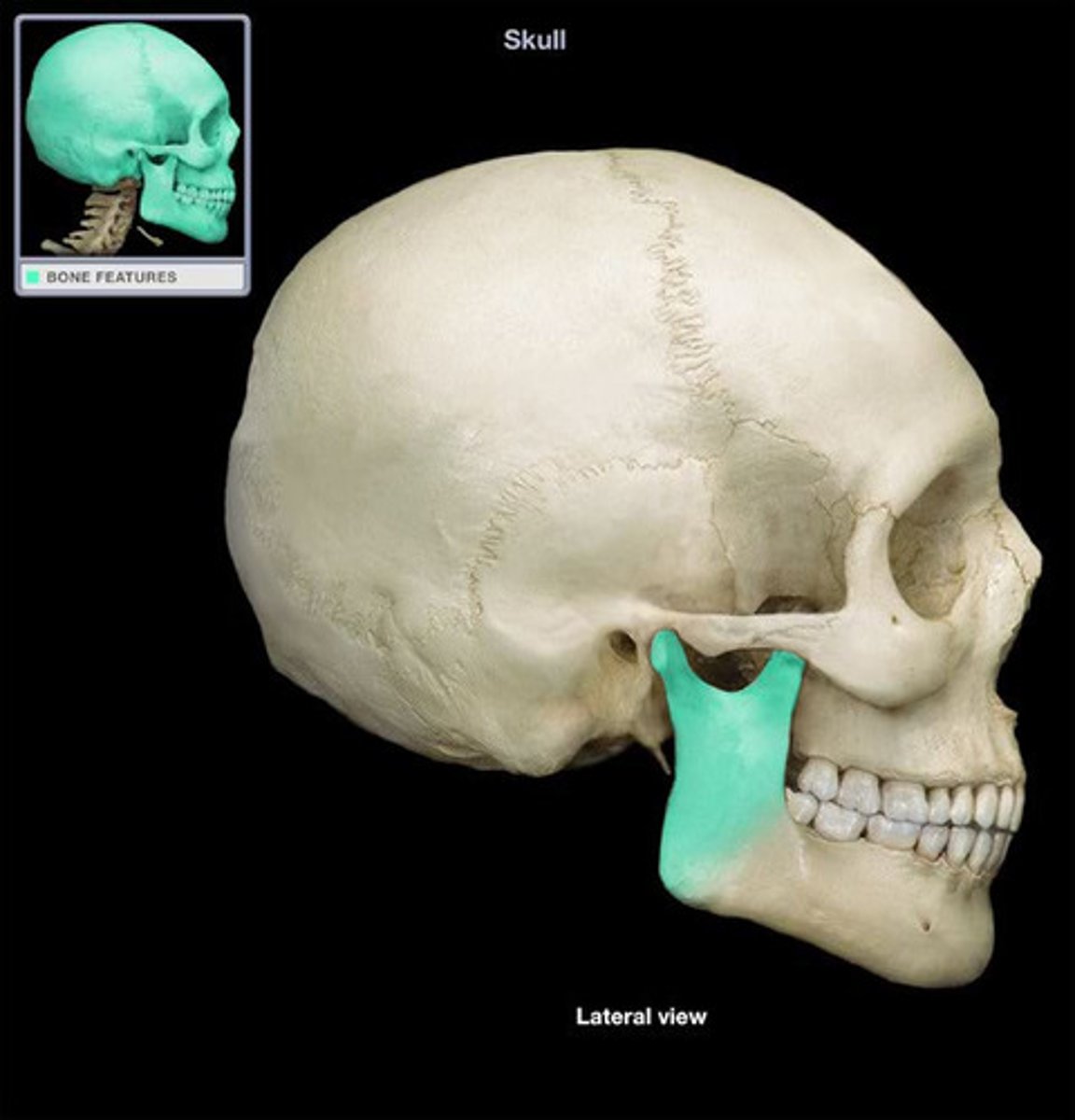
Alveolar Process (Mandible)
The horse-shoe shaped curvature where the sockets for the bottom teeth are located; Normally, the lower teeth sit within the upper jaw line to give a natural "dental bite"; Physiognomically, this positioning affects the surface contour of the mouth
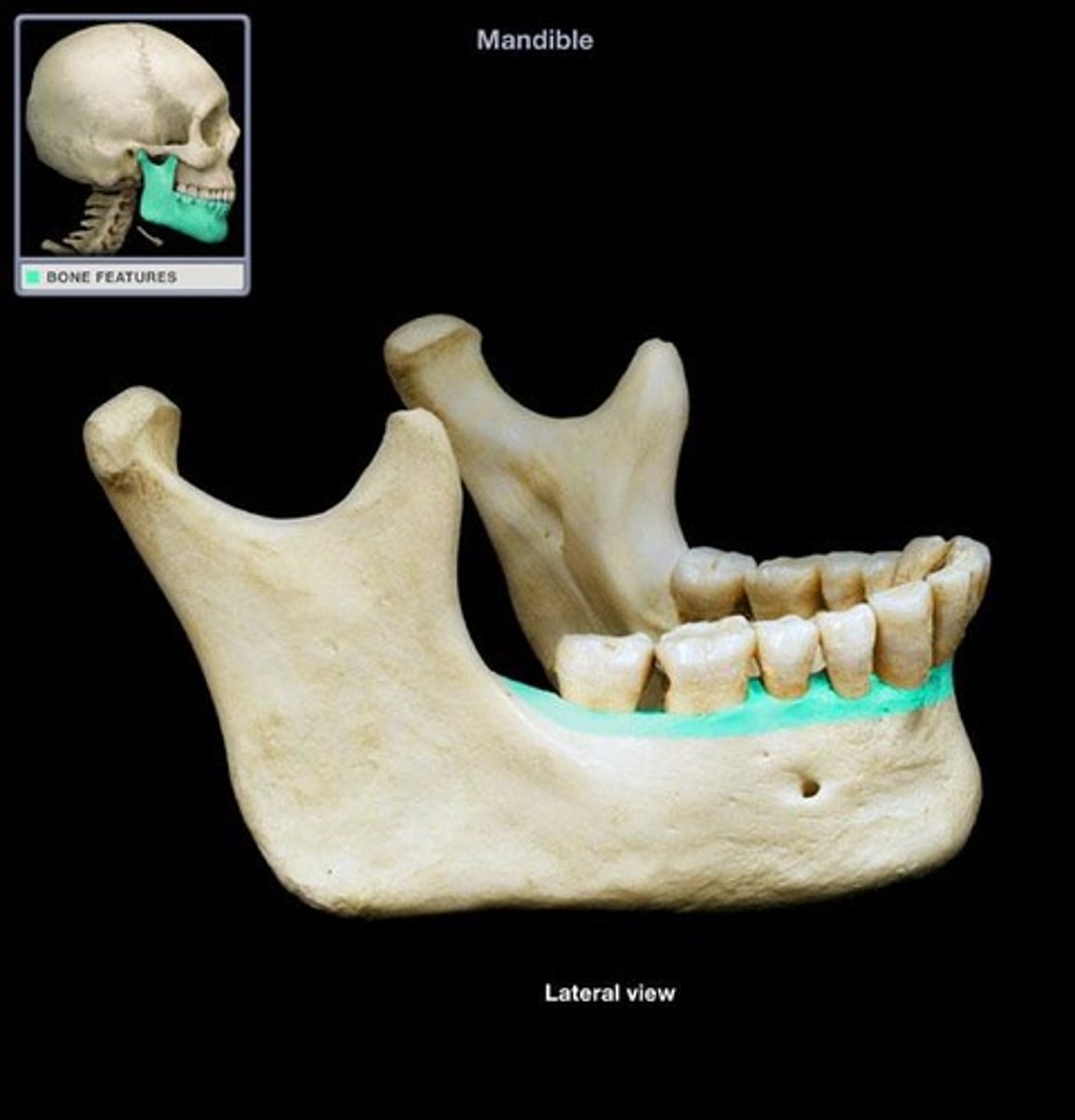
Mental Eminence
Triangular projection on the inferior of the anterior mandible; Tip of the chin
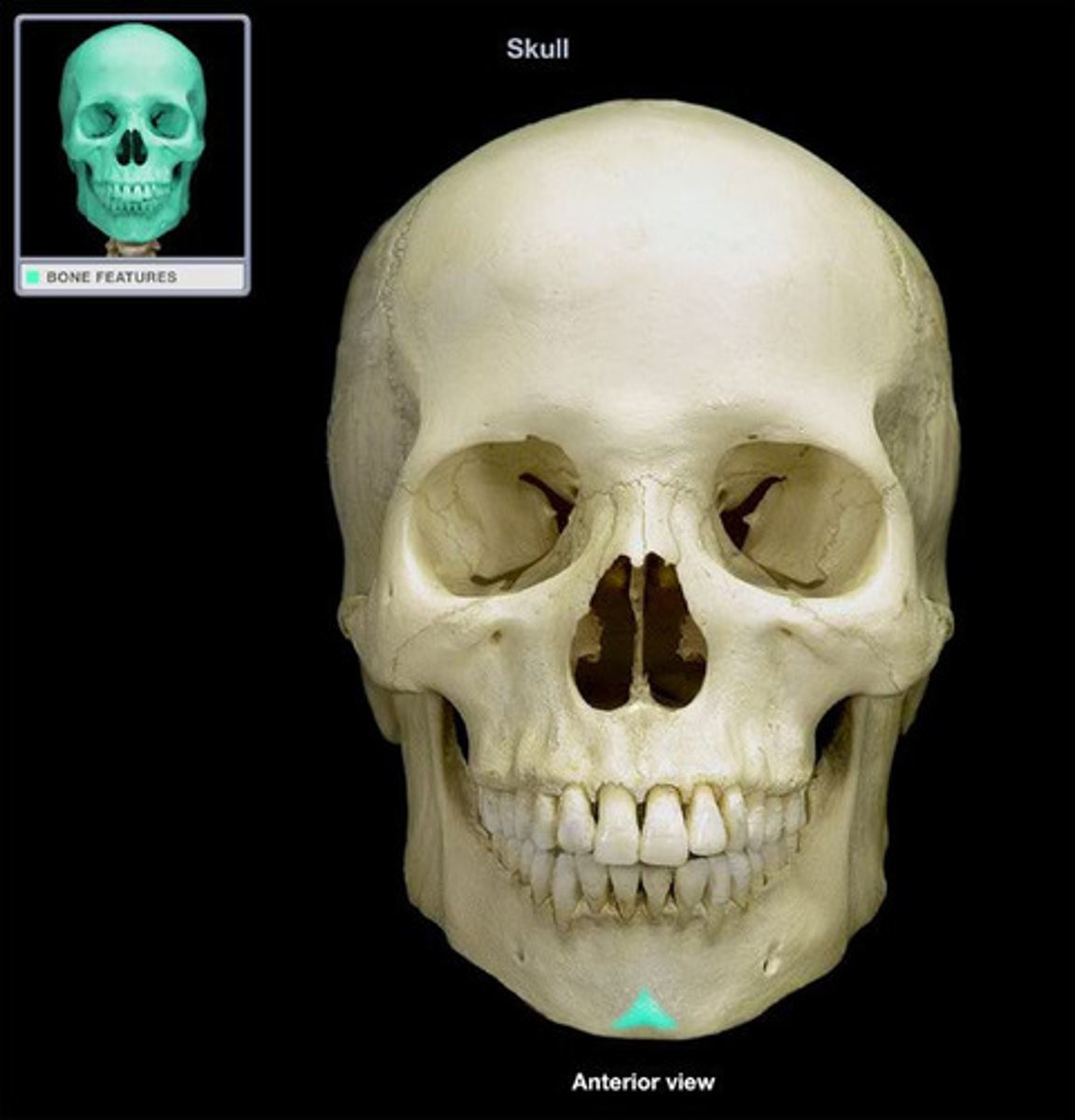
Incisive Fossa
The receding area between the mental eminence and the inferior incisor teeth; Physiognomically, this forms the arc shaped labiomental sulcus, a natural facial marking.
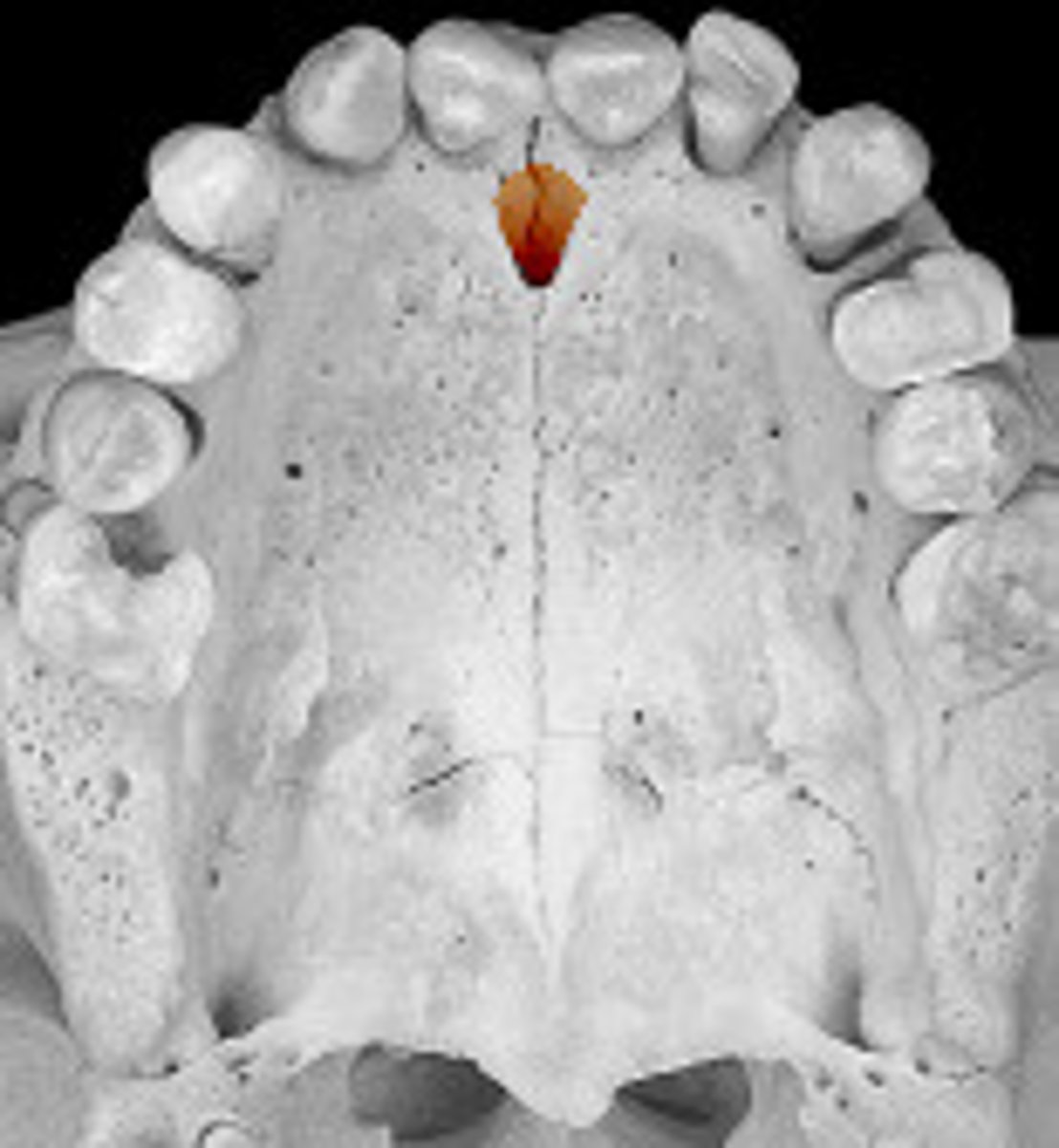
Coronoid Process
Thin, flattened process projecting from the anterior portion of the upper border of the ramus; Significant in "setting" broken/dislocated bone; Attachment point for temporalis muscle
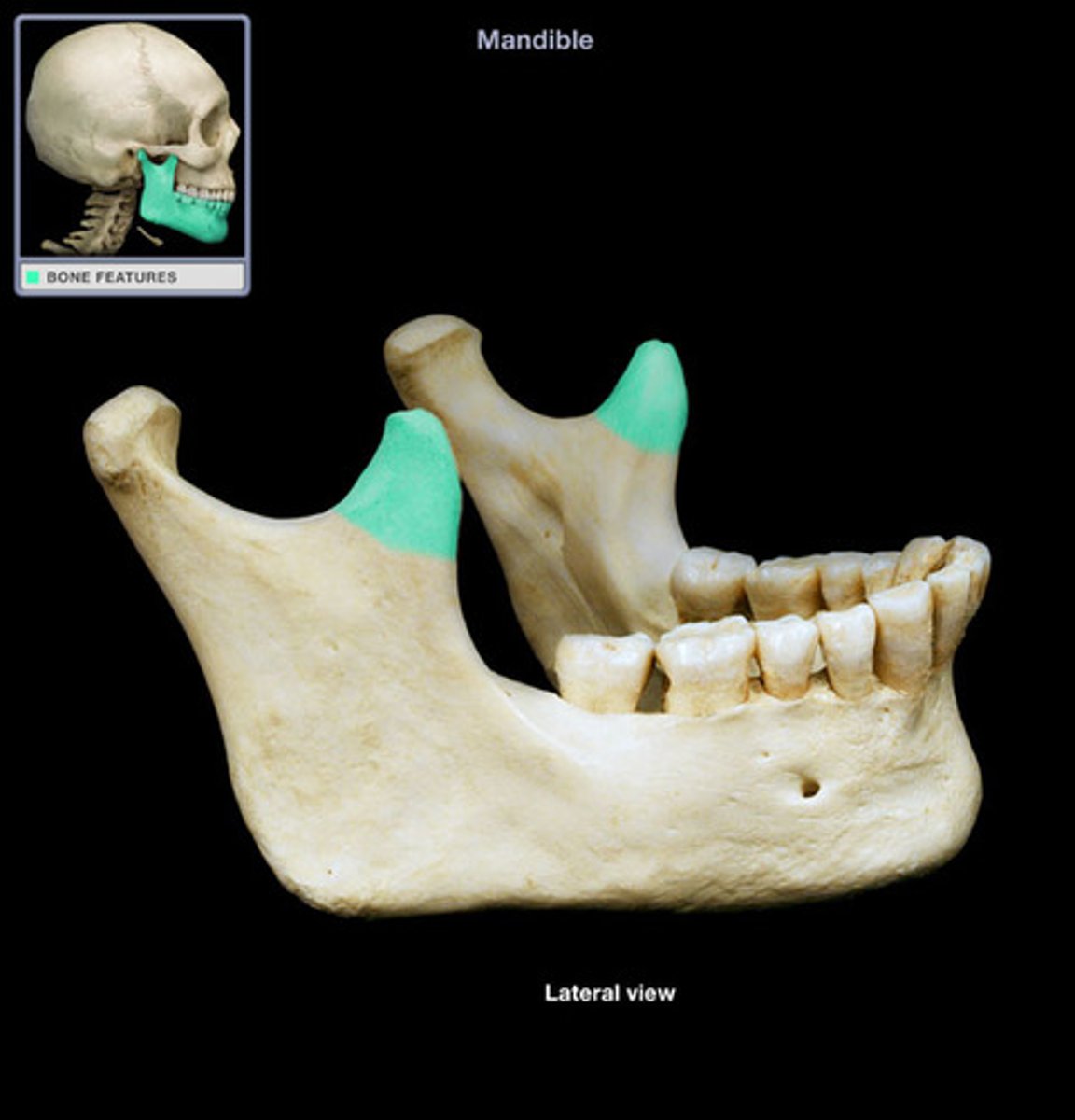
Mandibular Condyle
Rounded eminence at the articulating posterior process of the ramus; Significant in "setting" broken/dislocated bone; Articulates with the mandibular fossa
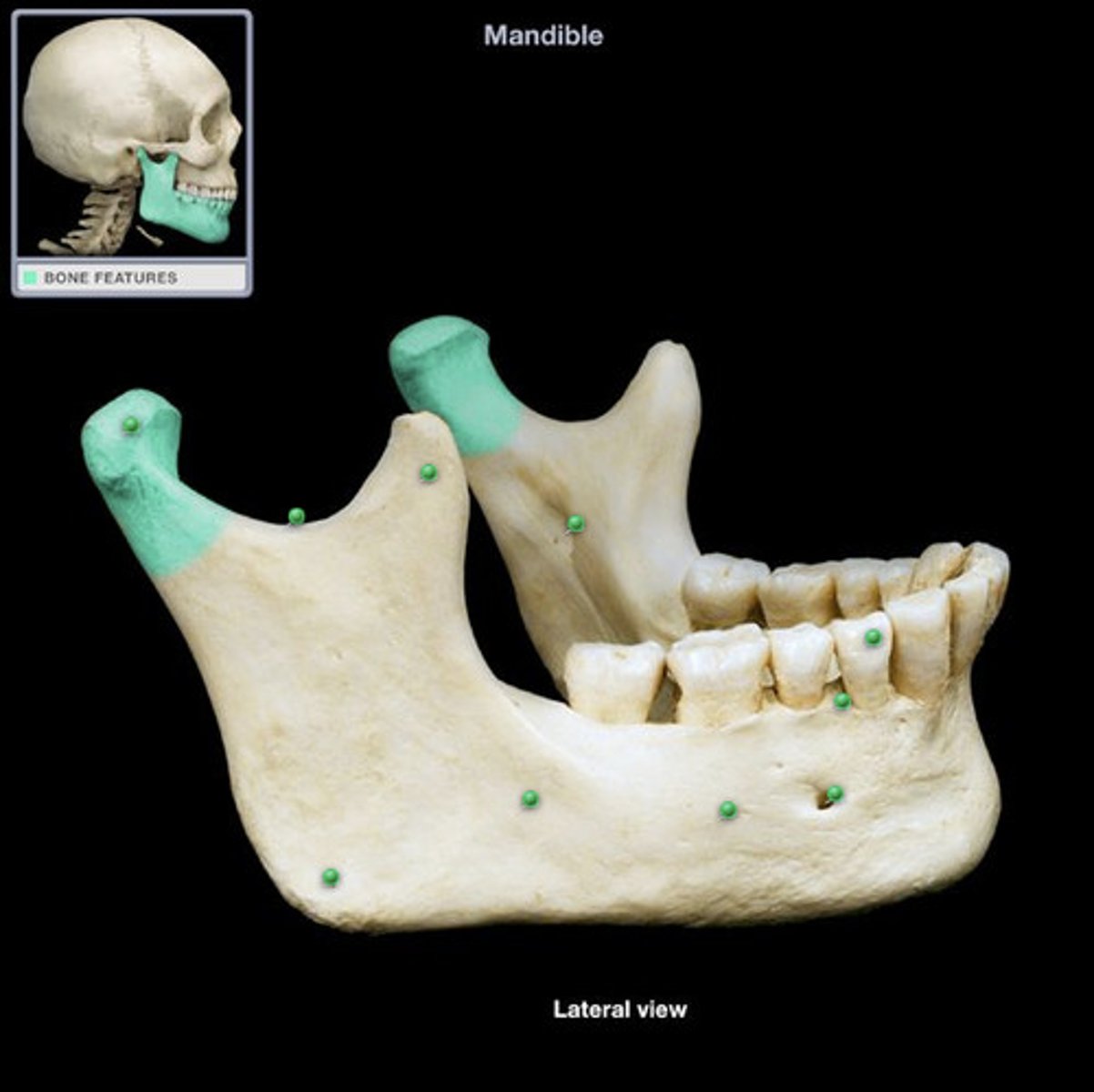
Angle of the Mandible
Formed by the junction of the posterior edge of the ramus and the inferior surfaces of the body of the mandible; Influences form of the head from frontal view; Greatly affects bone structure/jaw line of the face; The widest part of the jaw line is measured from angle to angle and is known as the "bimandibular width".

Vomer
Located along the midline within the nasal cavity and forms part of the septum
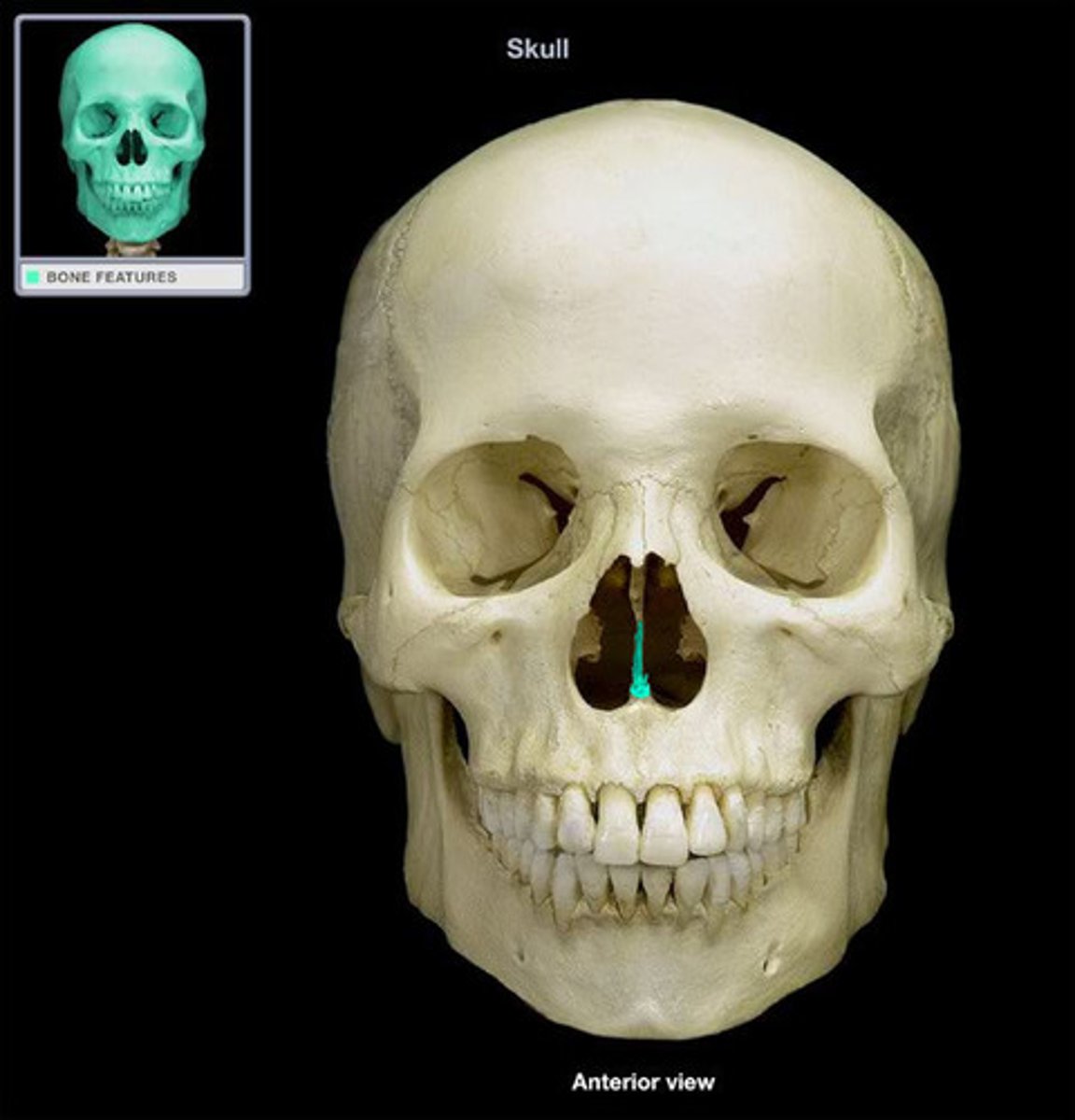
Lacrimal
Located in the medial wall of each orbit, resembling a fingernail in shape.
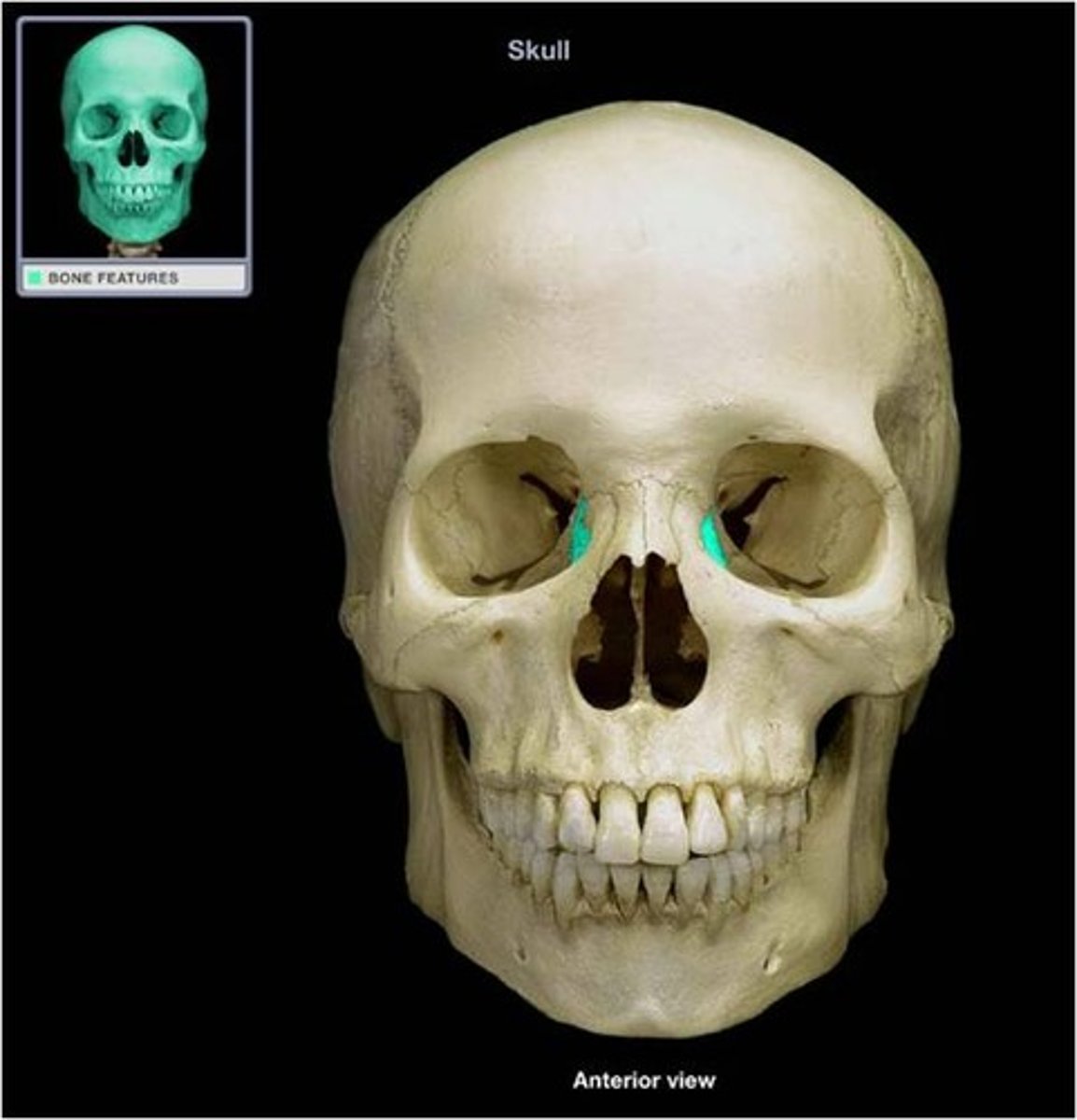
Palatine
Located at the back part of the nasal cavity behind the maxillae. Forms part of the roof of the mouth
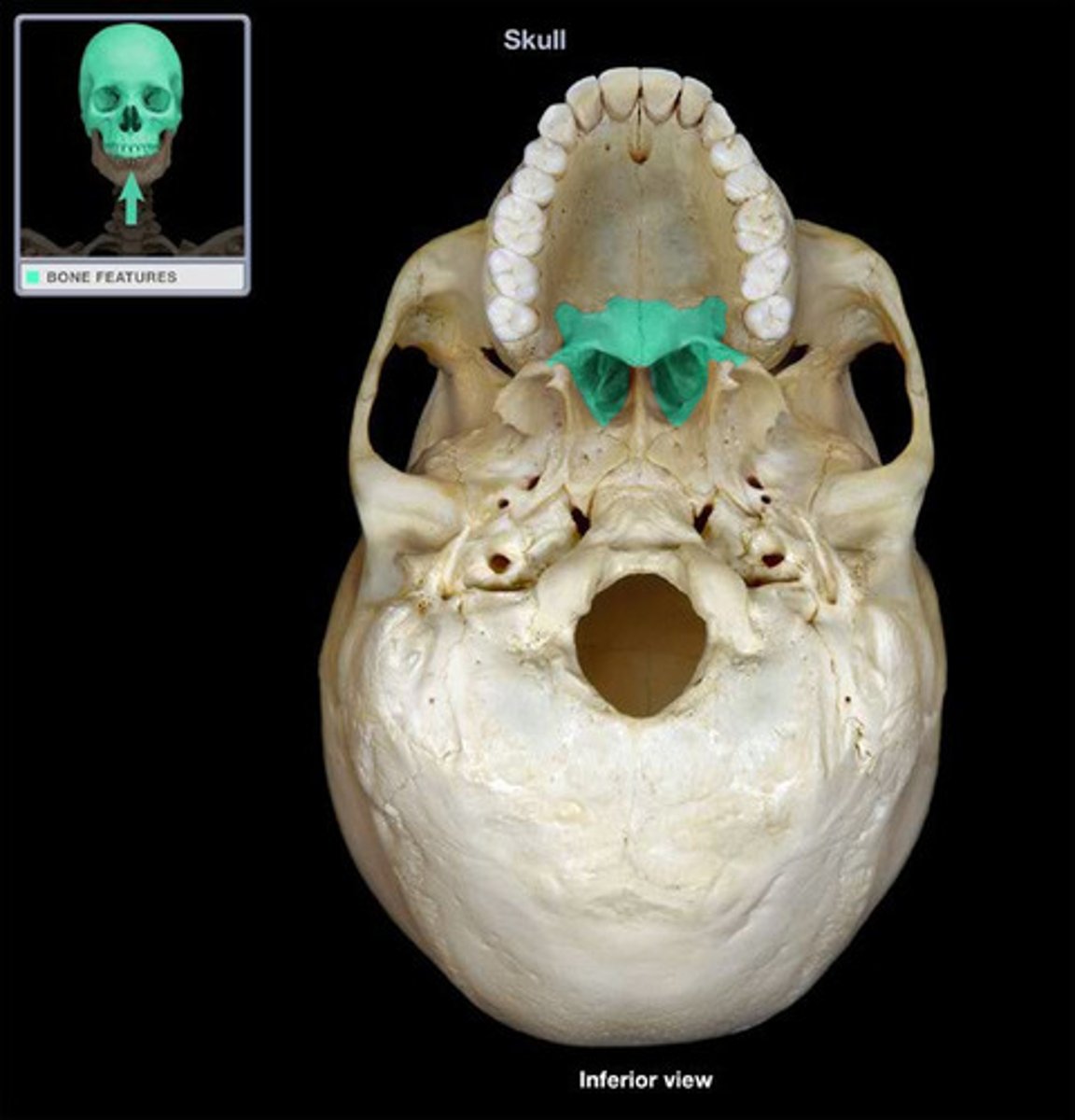
Inferior Nasal Conchae
Scroll like bones that project medially from the lateral wall of the nasal cavity, overlying a meatus
